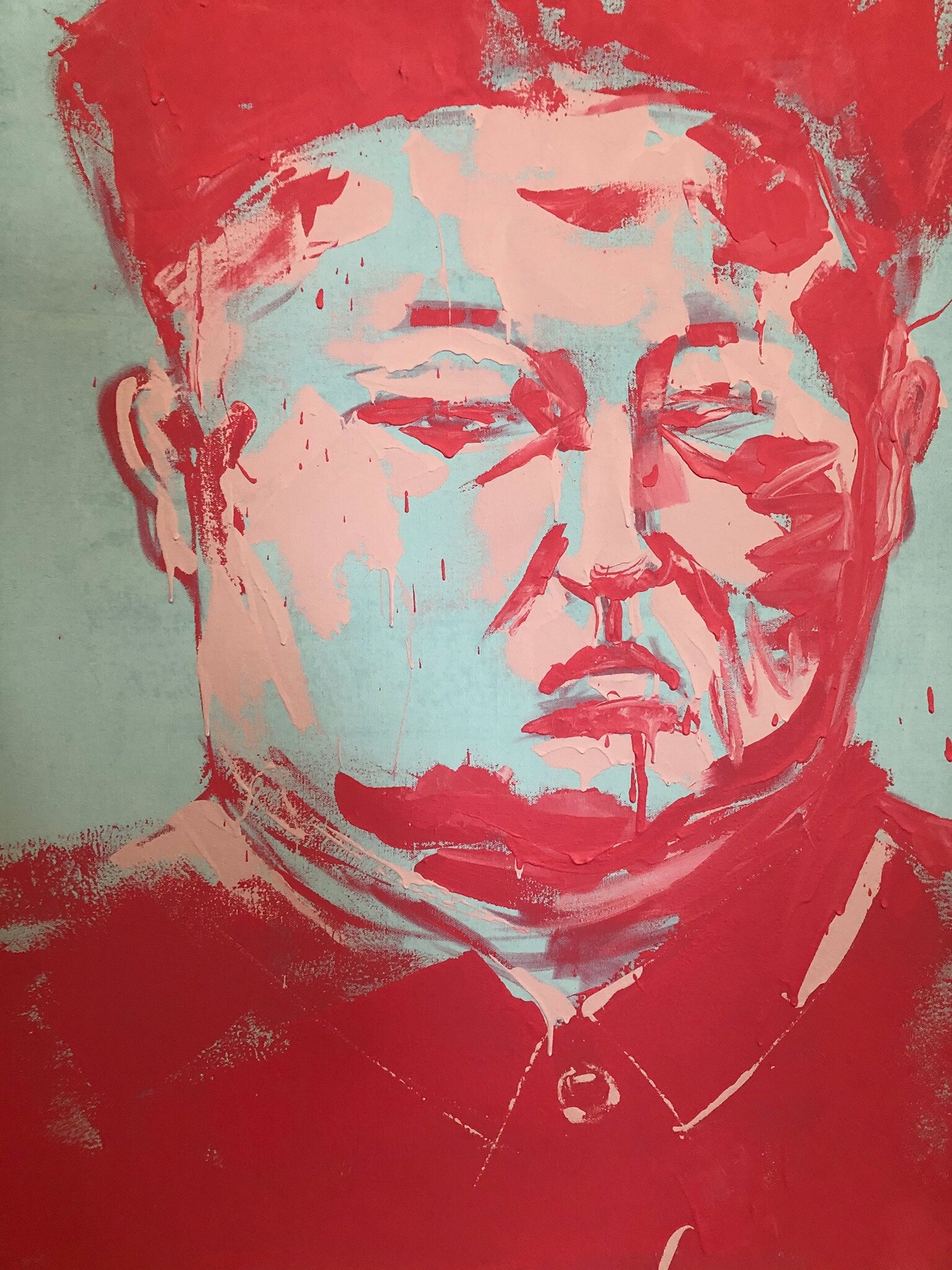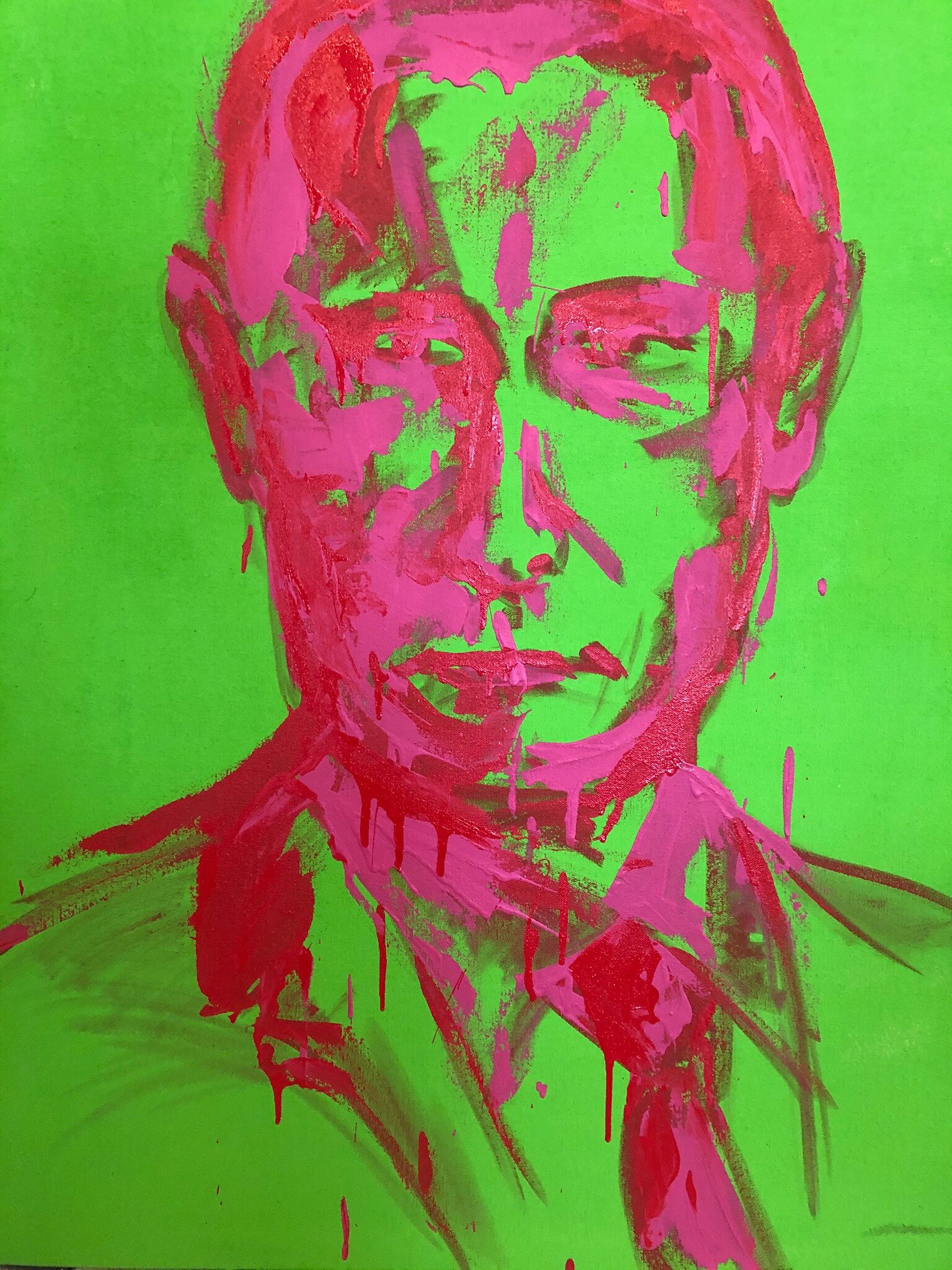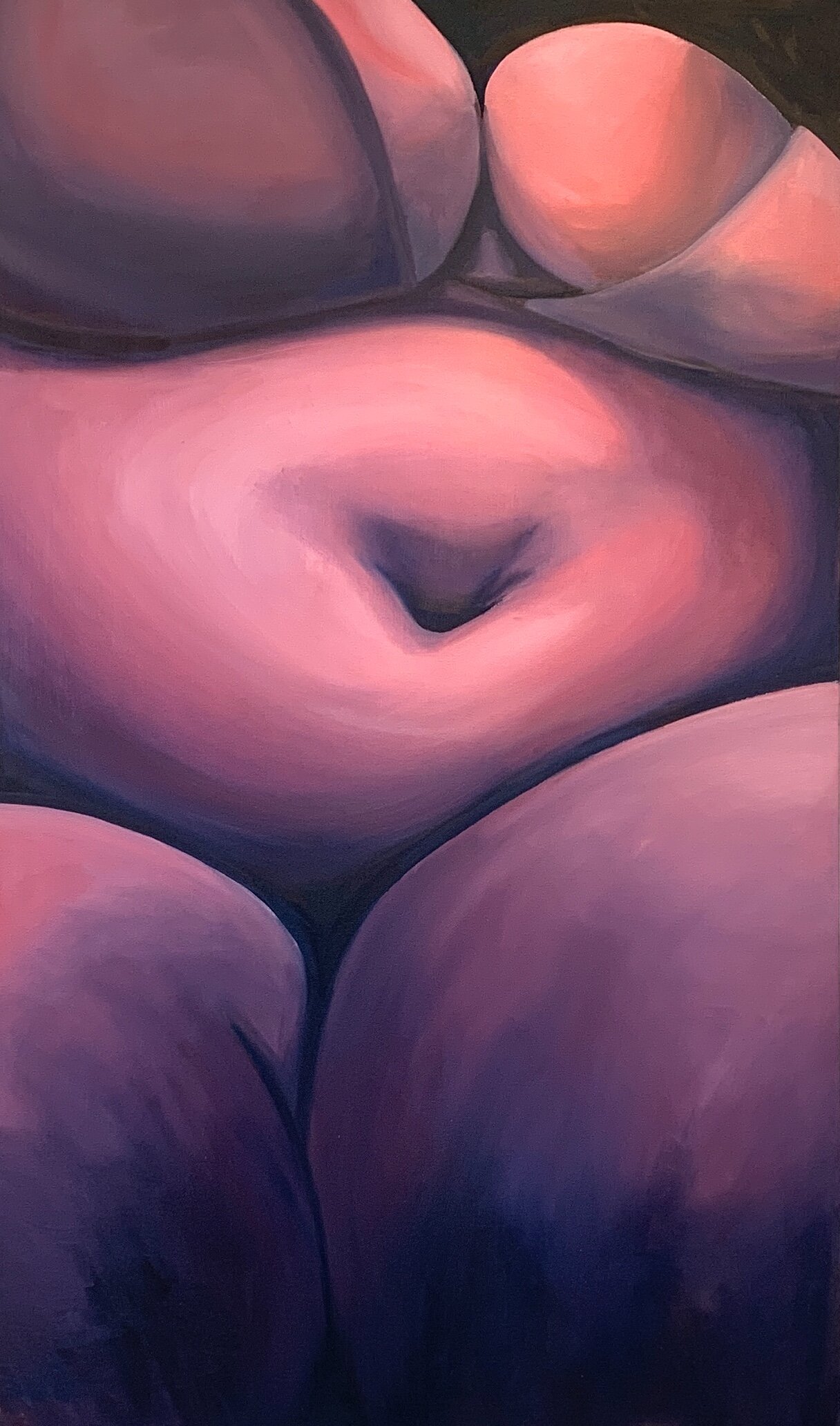Ryan Wilde Fancy Kinkster, Felt, Synthetic Hair, and Lace 22" x 11" x 10" 2020
VIRTUAL TOPOLOGIES:
QUEENS COLLEGE MFA EXHIBITION
Opening Reception via Zoom: Friday, April 24
On view: April 24 - May 22, 2020
Featuring:
Cristina Ferrigno, Brianna Harlan, Cecilia Judge, Adam Nadel, Kseniya Ostrovska, Deja Patterson, Julia Sinelnikova, Cody Umans, Ryan Wilde, Alex Wong, Xiaoting Wu
Drawing out the boundaries of imagined social, political, and sexual cartographies, the unique voices of Queens college MFA students are blended in their first online exhibition: Virtual Topologies.
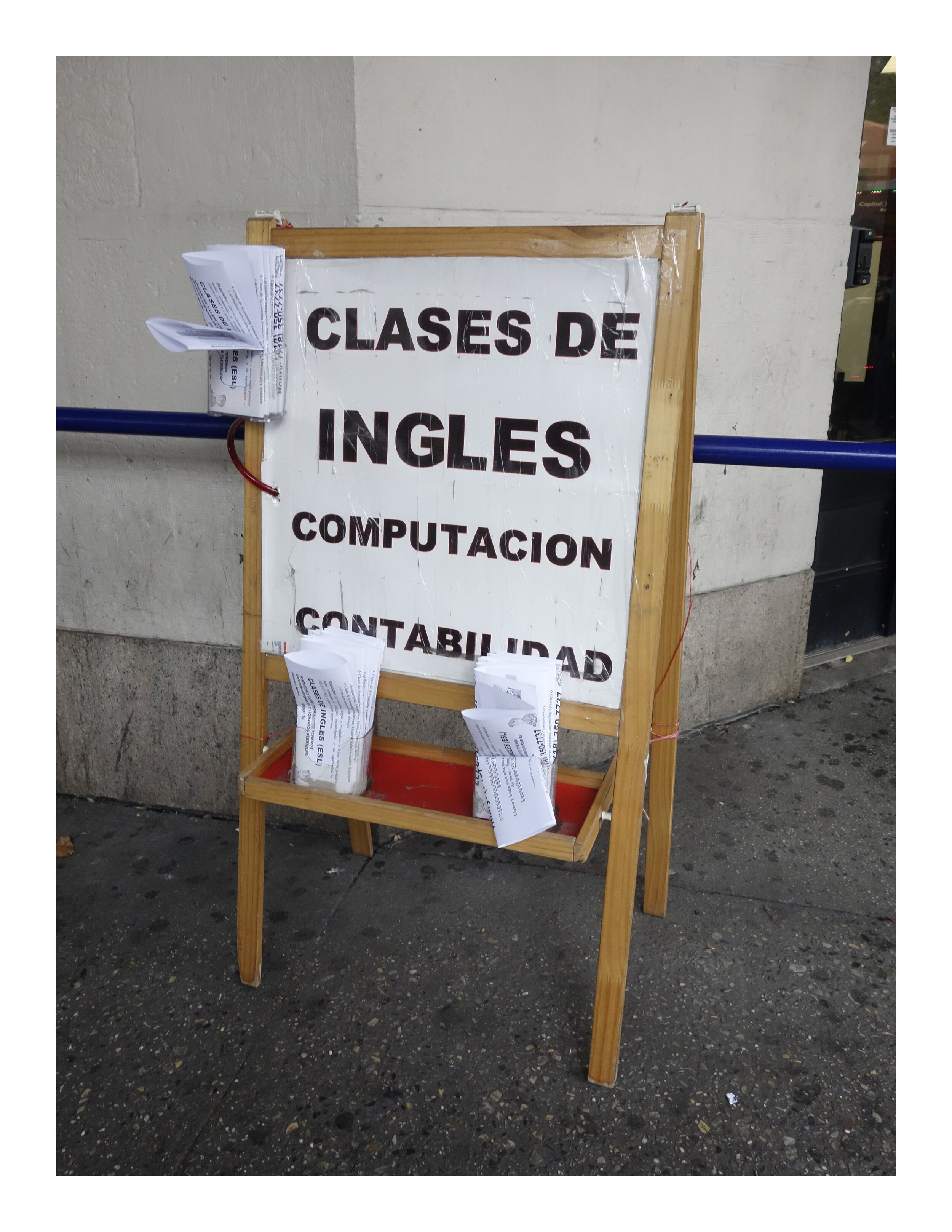

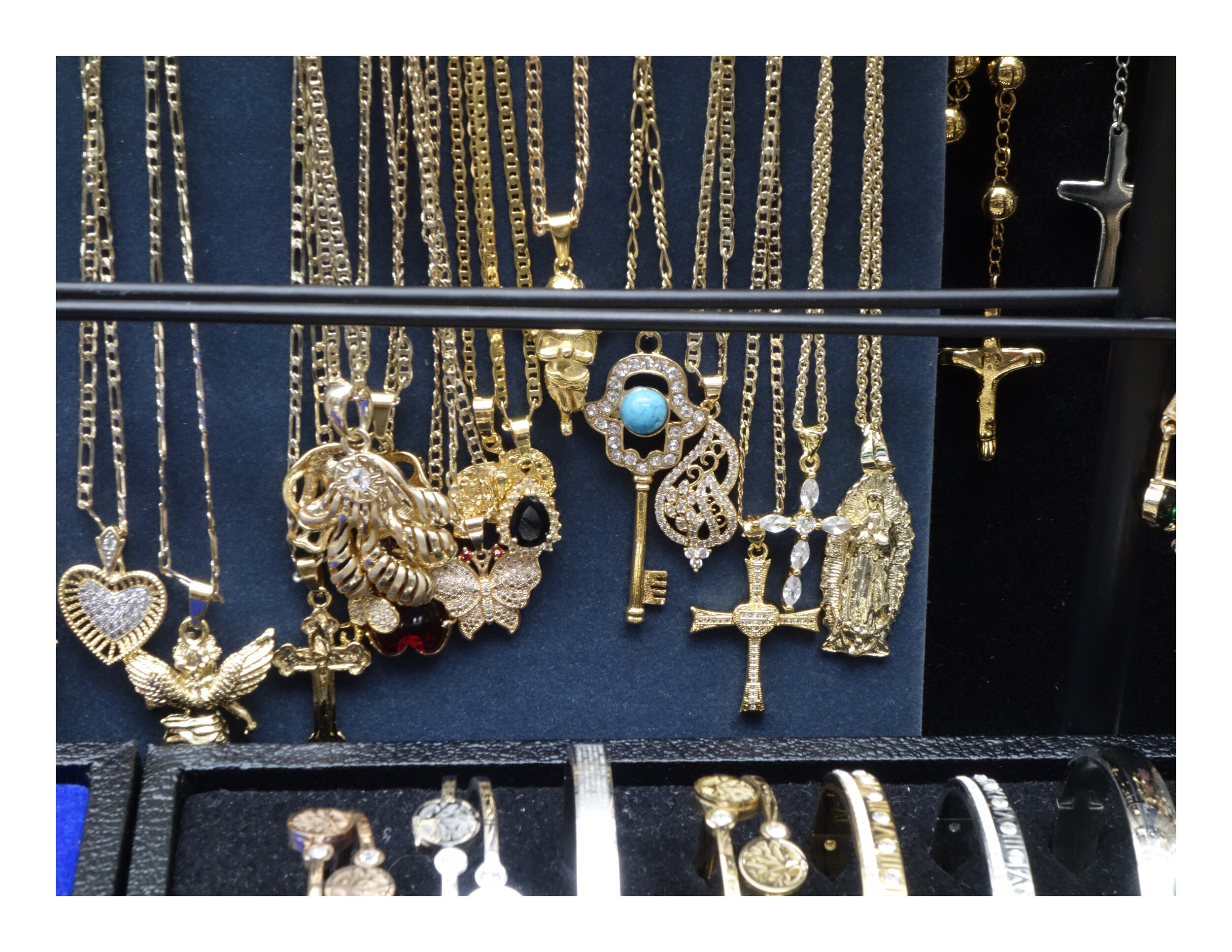
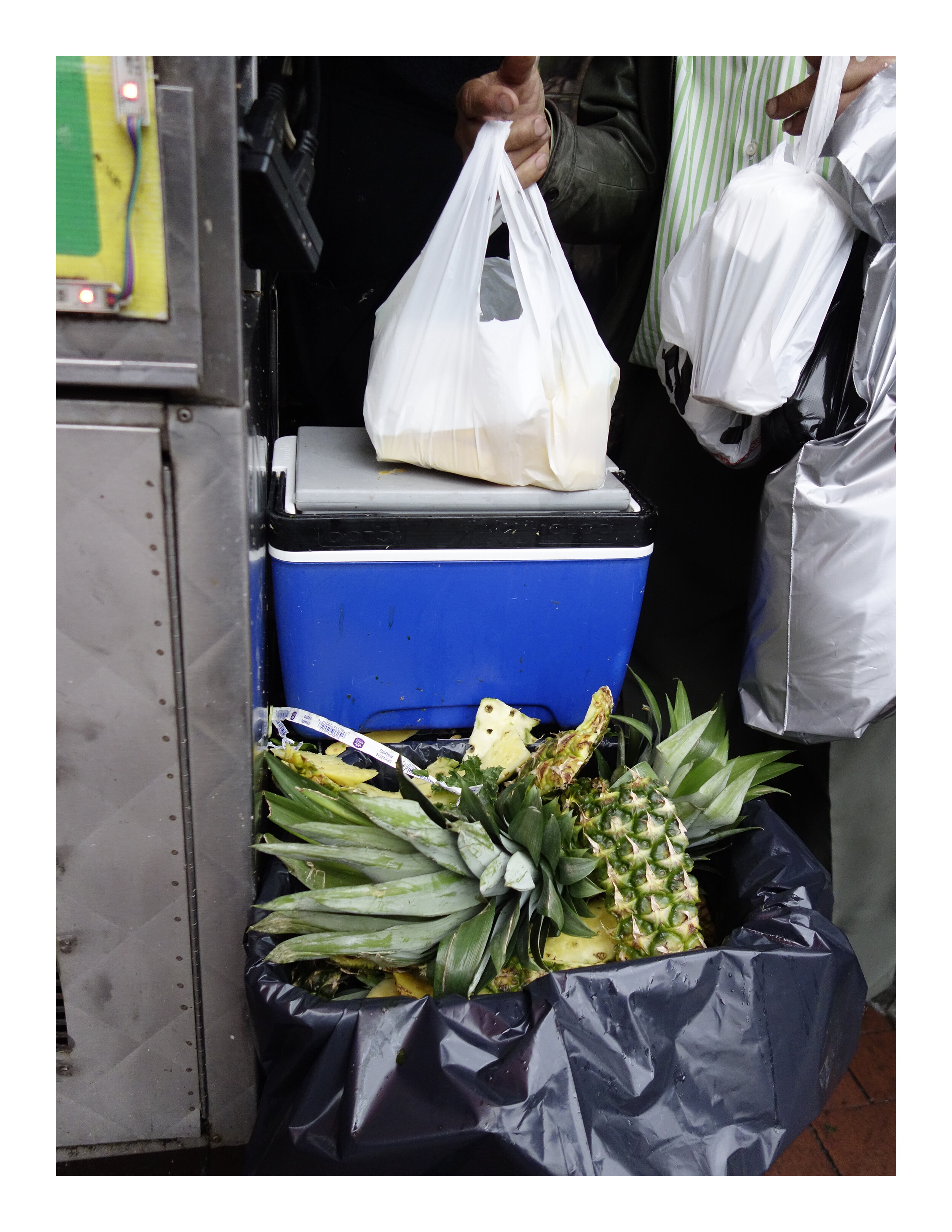
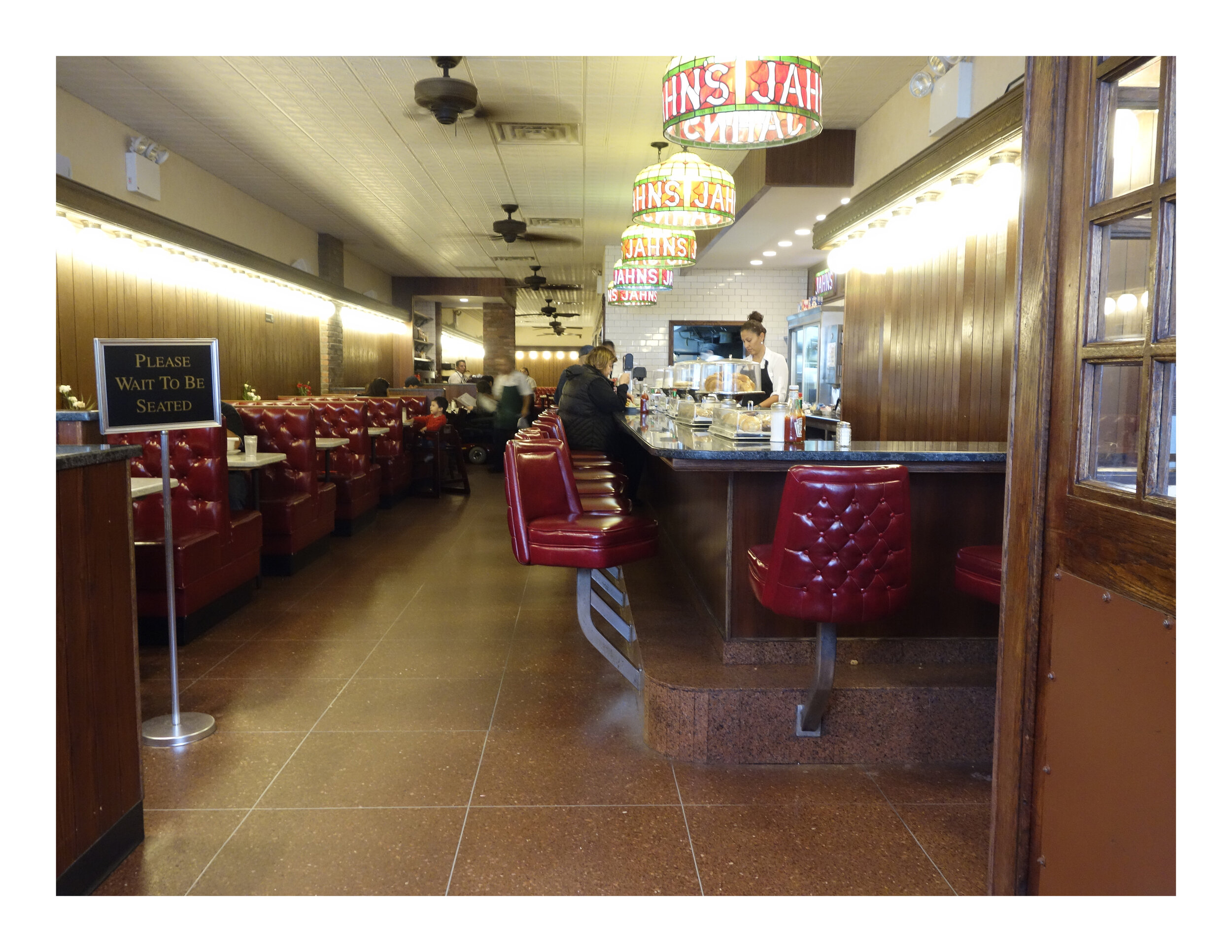
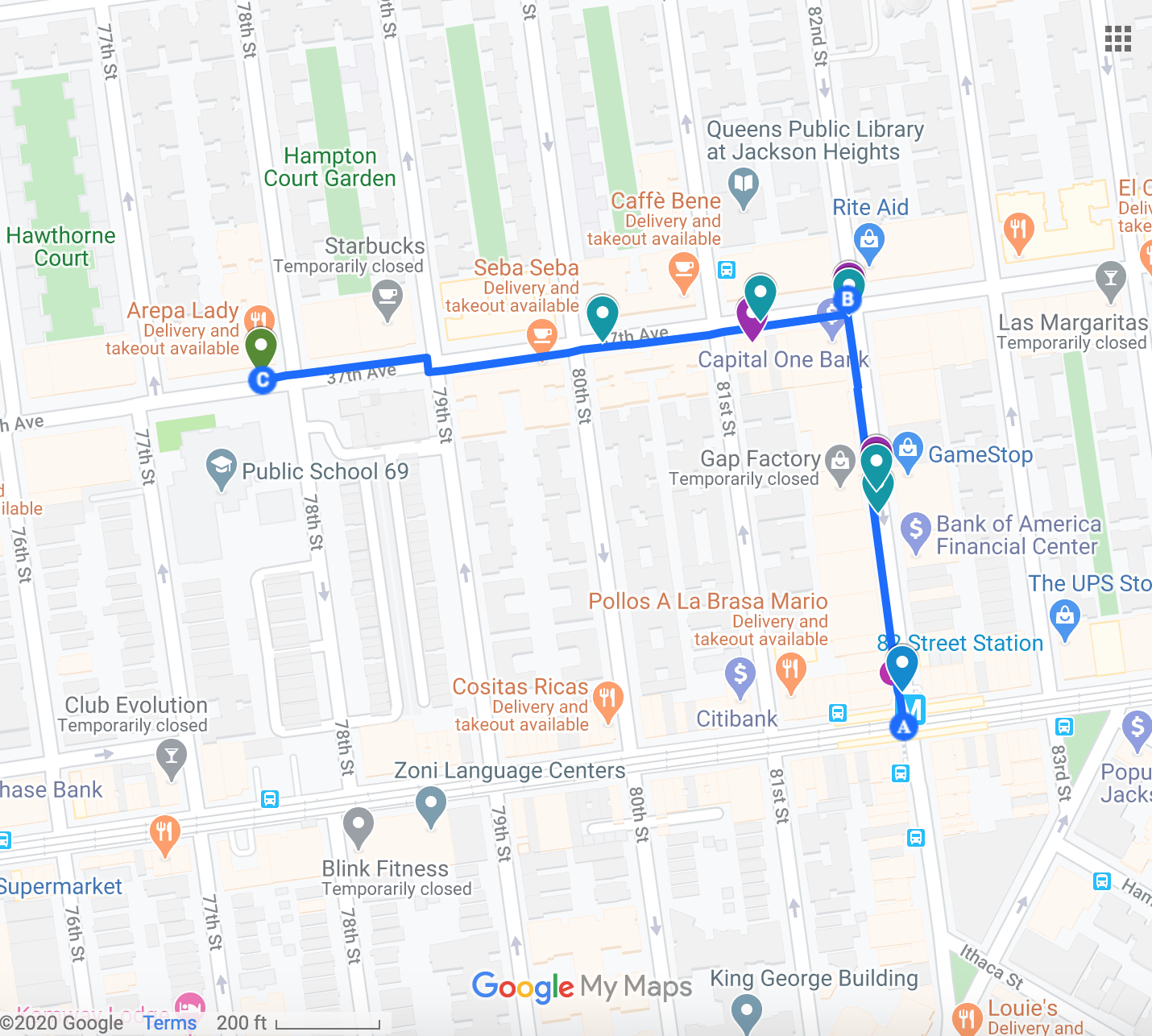
Cristina Ferrigno
cmferrigno.com
Cristina Ferrigno traces natural desire lines, preserving the objects and materials she encounters in streets, shops, bodegas, and footpaths as a means of cataloguing systemic change in the rapidly gentrifying neighborhoods of Brooklyn, NY.
Artist Statement:
My work is a way for me to tackle the personal and philosophical questions of identity. The feeling of “in between–ness,” as a transnational adoptee, manifests in my themes of preservation, memory and heritage. I’m drawn to photographic processes, which serve as an archive and have a rich history of their own. I work with original personal documents, digitally scanned and use family photos in small, mixed media works and collages that reflect my interest in semiotics, art history and the exploration of personal and cultural identity. I have a penchant for collecting, I walk through neighborhoods that hold personal significance and I pick things up. I’m attracted to items from the natural world as well as man made objects that seem to hold a history. I’m interested in what objects and places can divulge about identity, as indicators of class, gender, age, race and so on. Maybe there are objects that communicate cultural significance that I can’t comprehend. I enjoy fabricating micro-narratives for objects and photographs, assigning value and significance to mundane things and creating an archive that serves like a memory. There is a prominent feeling of loss that runs through my work, understanding urban spaces, discarded objects and pieces of nature as things that go through cycles, that have aspects that live and die, there's a sense of nostalgia but also of grief.
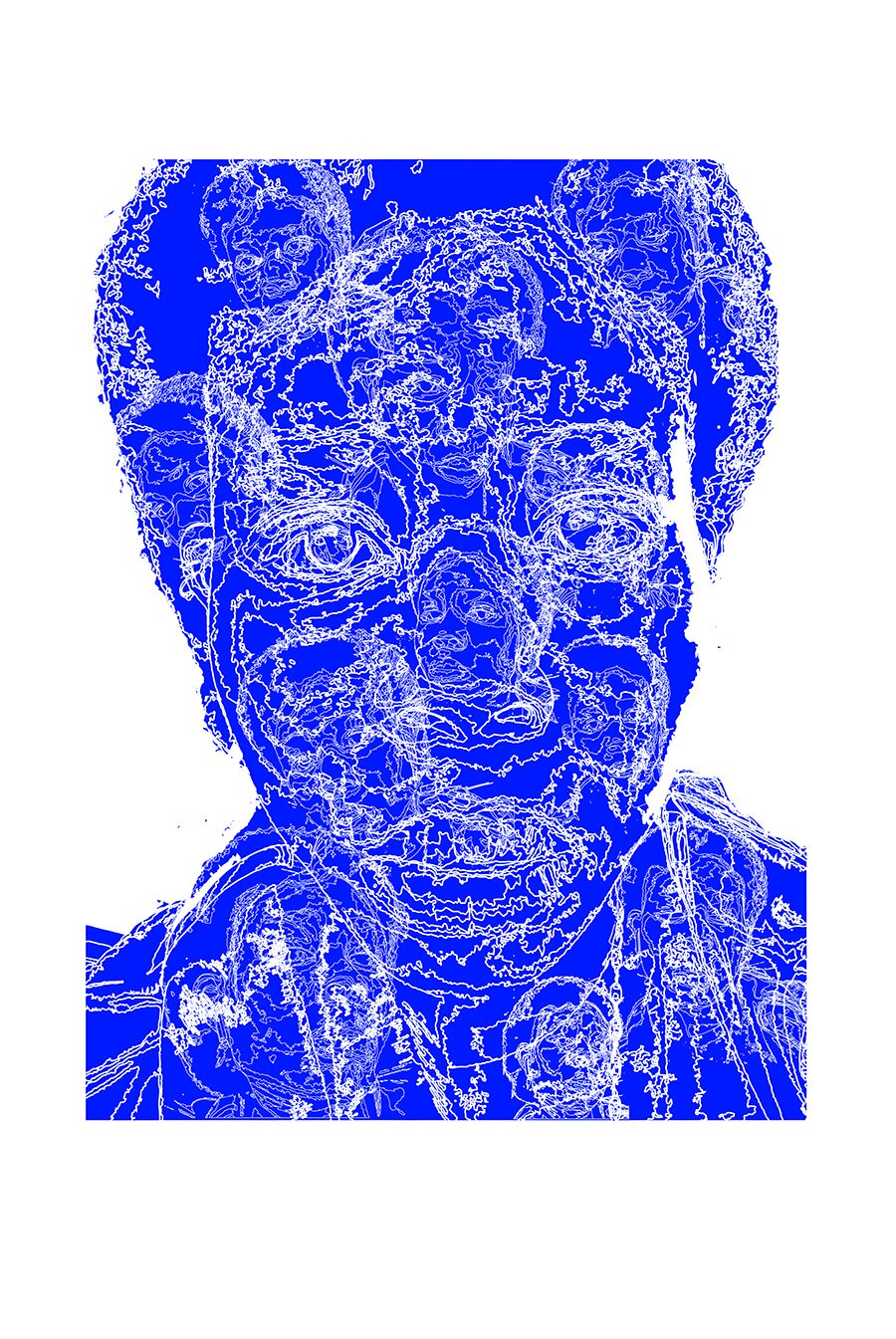
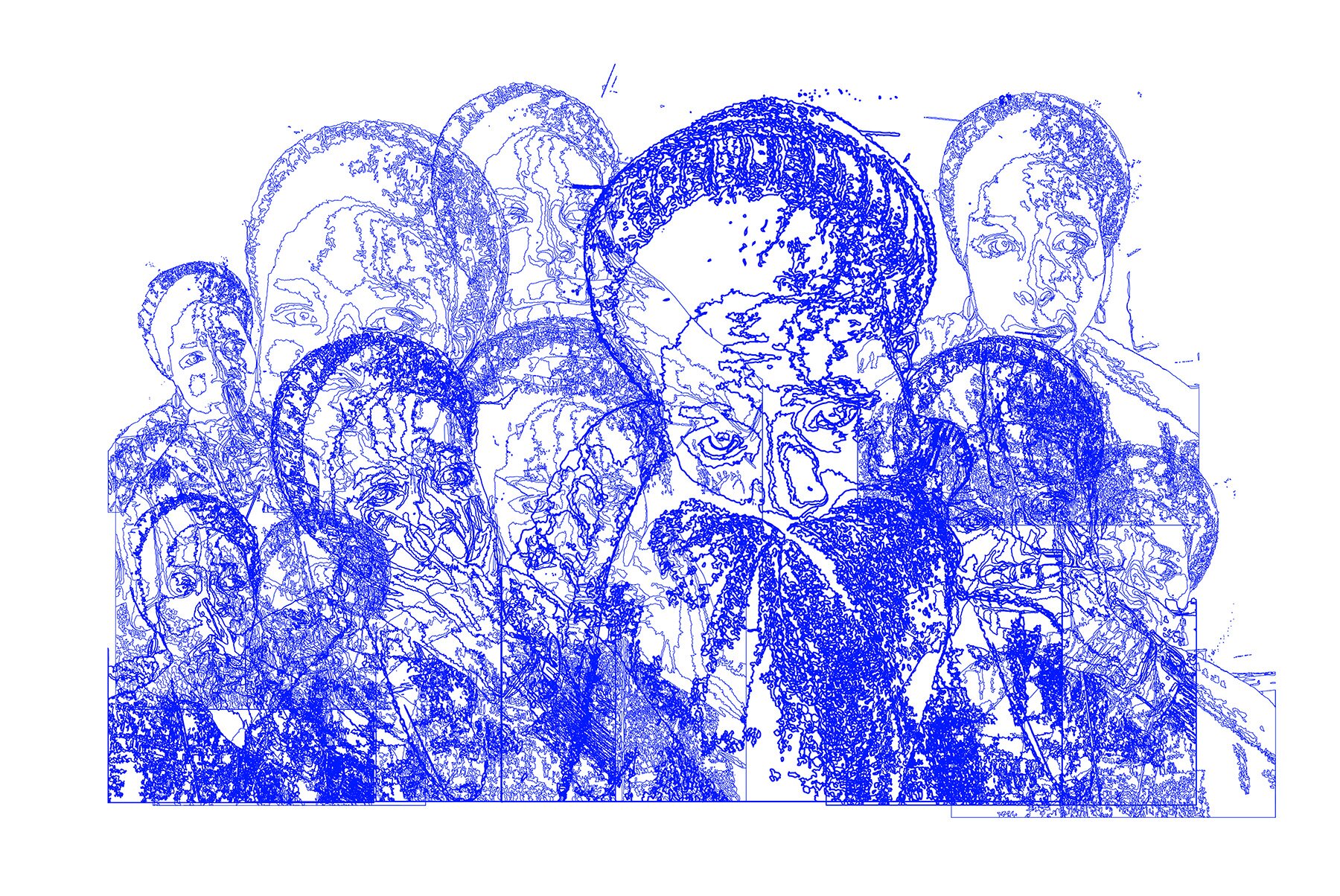
Brianna Harlan
briannaharlan.com
Brianna Harlan maps space with her body, creating drawings from recorded, ritualized motions that manifest through the cultural significance of the azure print: blue. These motion-maps embrace Harlan’s more collaborative, community-based projects like “Black Love Blooms” through their exploration of social acceptance and repression.
Artist Statement:
I am a multi-disciplinary artist working primarily with installation, portrait, digital manipulation, intervention, works on paper, and photography. My work is driven by an obsession with what shapes social structures and how that influences quality of life and health. I am most concerned with two things: the effects of interpersonal disconnection on the human condition and how our habits both serve and trap us. My work depends on vulnerability and awareness. Since it often engages people’s lives— including mine— the process of inquiry and intervention is just as important as the end result. In my conceptual process, I use community collaboration to reach multiple levels of discovery and nuance. Intimacy and the information behind an impulse are a few outcomes I am interested in. I am excited about exploring narrative through everyday objects and the use of interactive elements to activate the static and familiar. My major influences include Sonya Clark, Otobong Nkanga, Wangechi Mutu, Frida Kahlo, Michael Rakowitz, Octavia Butler, and the moon.
Cecilia Judge
Cecilia Judge creates material lures, playing on viewer’s expectations of slaughtered meat and lustrous materials as tantalizing ends in the spectrum of consumption.
Artist Statement:
Cecilia Judge works in sculptural compositions that contrast soft and subtle materials with those that are more harsh, violent, or perturbing, creating pieces that are initially alluring, yet repulsive at closer examination. These sculptural works, as inspired by works of science fiction, such as Philip K. Dick’s “Fair Game”, mimic a lure or bait, highlighted by such details as the use of fishhooks. Although the position of these works are reminiscent of slaughterhouses, (an image more recognizable to us than bait hanging from the sky,) they shift that expectation by not being meat. The hues and shades of pink however still impose an uncanny sense that these pieces could be organic, while gold serves as an an alluring eye-catcher, realizing the violent nature of the piece: a symbol of dogmatic institutions that lure the public into a false sense of security.


Adam Nadel
Adam Nadel projects forward–– to the future of photography–– by examining the past. He utilizes facial recognition software, images drawn from particle colliders, and other, object-based research materials to unpack the early impact of the photographic medium.
Artist Statement:
I seek to better understand the photographic medium through the cross-pollination of object making and research. I use the wet collodion process, subatomic particle accelerators, object recognition algorithms, and medium format film to create photographic prints and photographically derived objects. These physical processes are both a meditation upon, and a literal link with, the research-driven component of my practice. My research is focused upon the three decades following the 1839 public demonstration of the first photographic process. This research aims to better understand the cultural significance of the photographic medium within the context of aesthetic philosophy and theory.

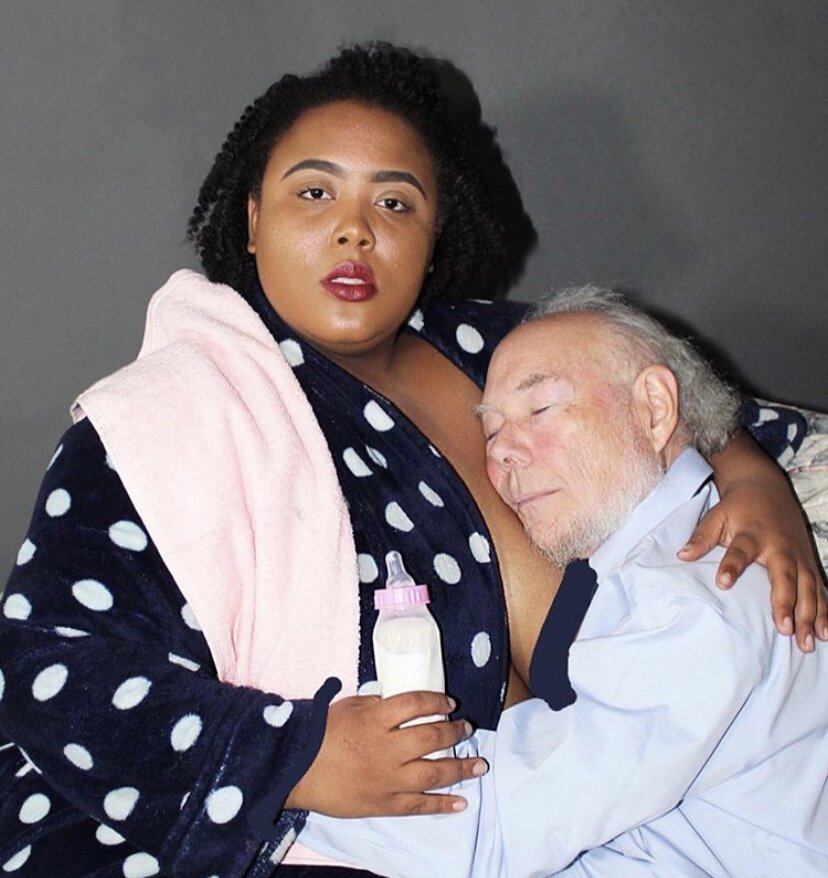
Deja Patterson
Deja Patterson charts societal discrimination against women through size-suppression, body shaming, and the physical impossibility of beauty standards. Powerful, monumental women dominate Patterson’s examinations of sexuality, race, and physique.
Artist Statement
I am a painter and photographer who focuses on highlighting the beauty of the plus-sized body. As a 300 pound woman, I have faced various forms of discrimination due to my large frame. In response to these unfortunate events, I’ve decided to use my platform as an artist to promote body positivity. I purposefully accentuate things that women are traditionally taught to conceal or lose, such as: back rolls, belly fat and cellulite. My principal aim is to encourage other fat people to unapologetically accept their physical appearances. I’m not brave -- I’m delicious.
My paintings primarily focus on the plus sized female physique. I am currently working with a dual toned palette ranging from various shades of pink to purple. This color choice is not a nod at society’s association of femininity with these colors. Rather, I was heavily influenced by the pink color scheme prominent in The Fashion Institute’s 2019 Spring Show, “Camp: Notes on Fashion” at The Metropolitan Museum of Art.
My photographs are heavily influenced by Cindy Sherman. When using photography I source various photographers to capture the performance of my different personas. I like to use humor and satire to address the power dynamics between black people and privileged white people. I often place myself, a black woman, as the person of power in my compositions. This is to challenge the roles that black women currently play in society juxtaposed against the roles we have played historically.
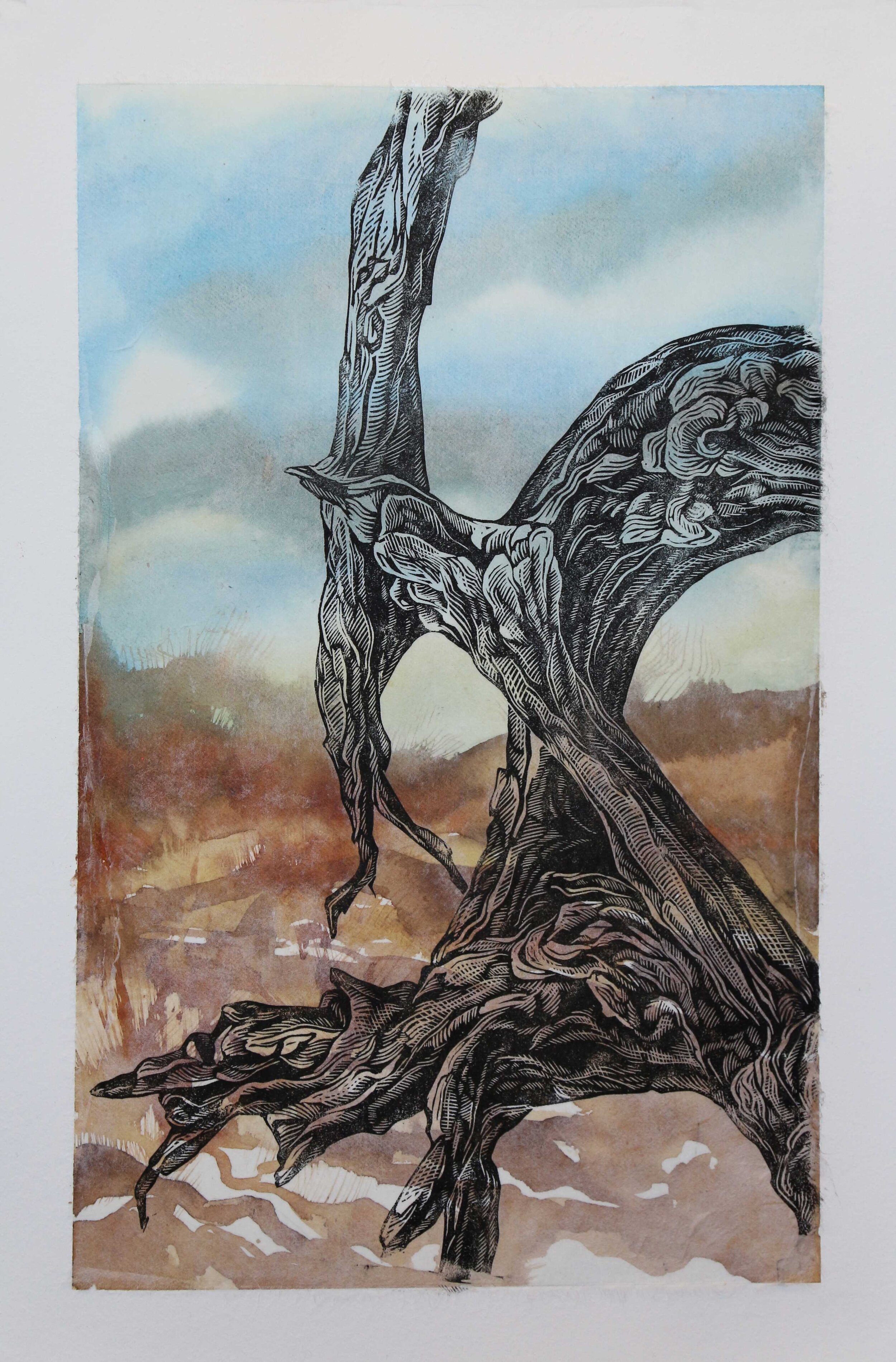
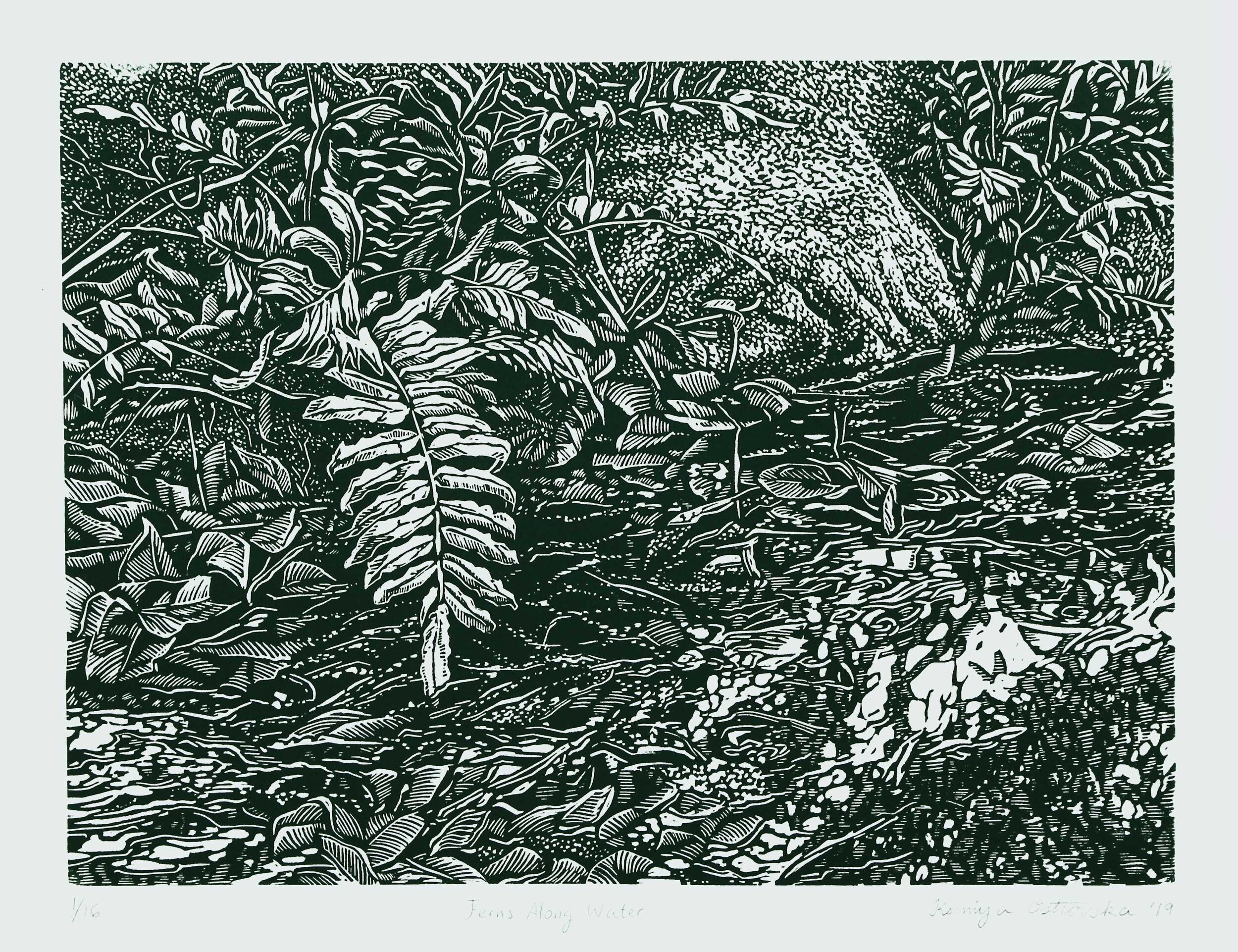

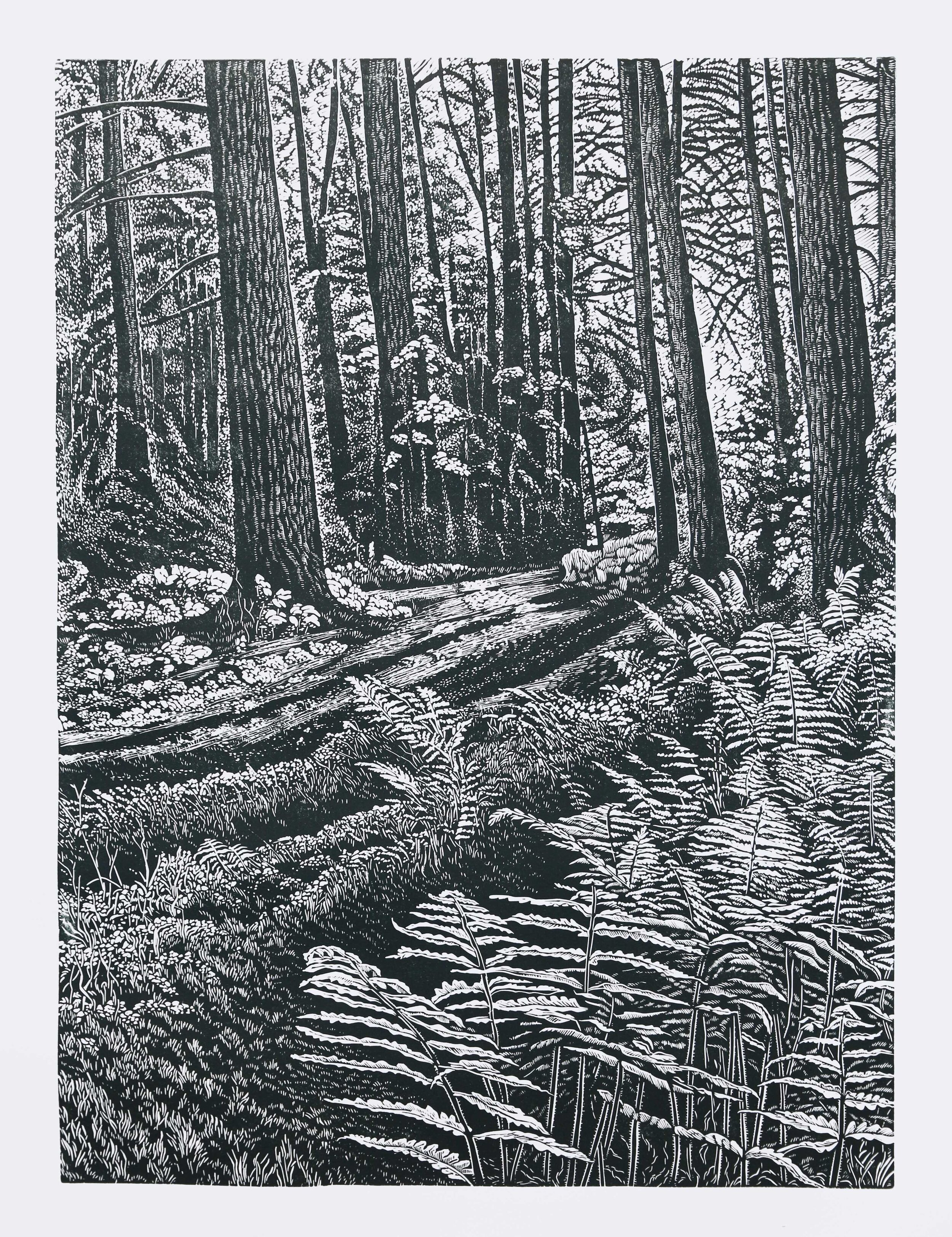
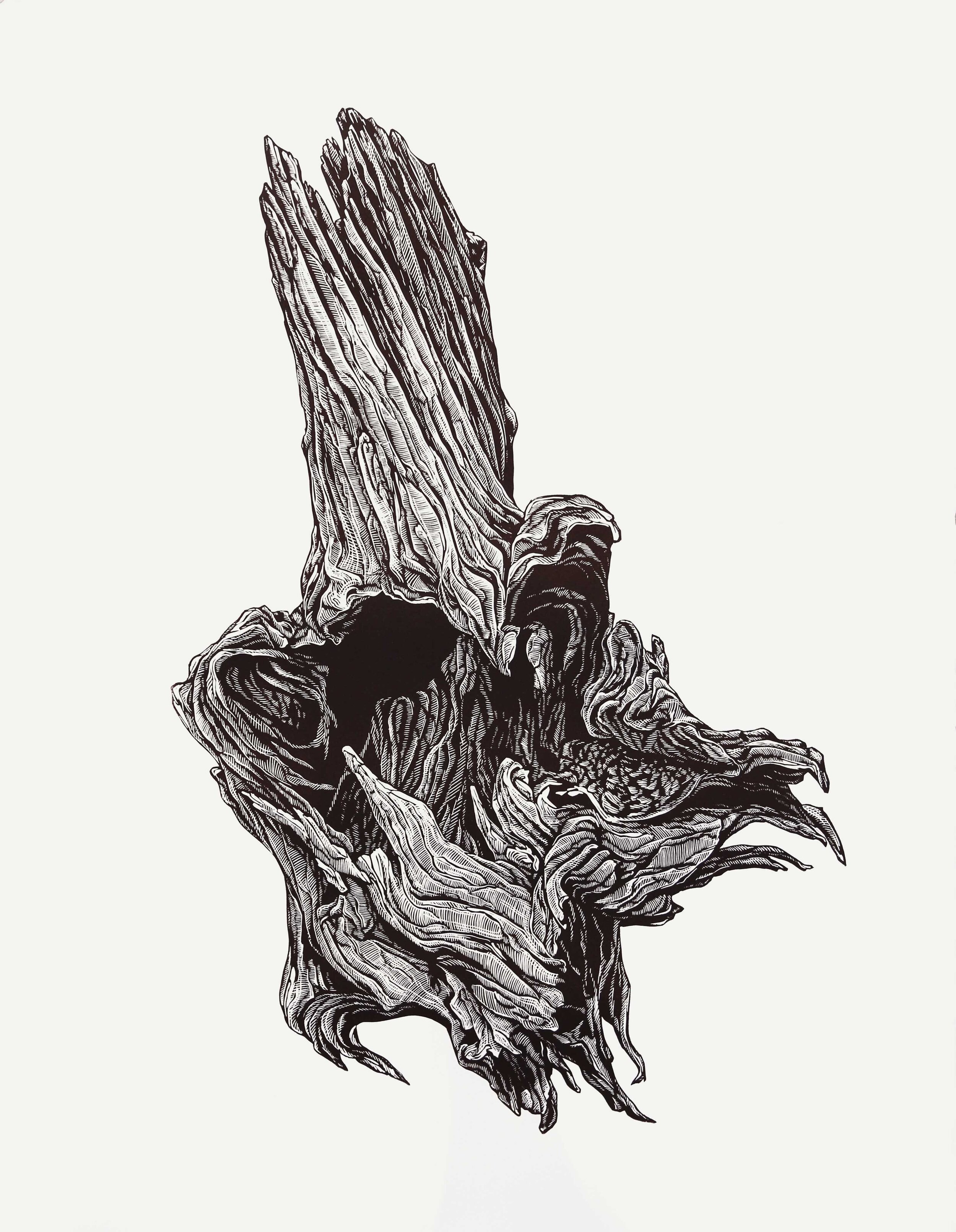
Kseniya Ostrovska
kseniyaostrovska.com
Kseniya Ostrovska draws out human relationships with the earth by examining the delicate balance between plants, humans, and environment.
Artist Statement
I am drawn to the complexity of plants, their similarity to human beings in terms of physical structure and needs, and the ongoing impact that plants and people have on each other. I love how the process of making relief prints leads me to look at driftwood and dead trees in a new light. Studying the form, notches and textures of the trees, many of which are over a hundred years old, reveals the individual struggles and stories of beings that exist on a time scale beyond human life. The neuron-like appearance of roots and the bone-like forms of knotted branches evoke a human presence and remind me that we all depend on the purity and accessibility of soil, sun and water in order to live.
My art practice is a way of focusing on the bioregional diversity around me and building a stronger connection with the natural world. While growing up and living in cities, I frequently found myself without a sense of belonging to a place: melancholic and restless. After the opportunity to live in rural upstate New York, surrounded by acres of living forest and cultivating a garden, I realized how a connection with the earth gives me a sense of place and contentment. My work offers viewers the experience of careful attention, respect, and micro-level fascination that I bring to my interactions with the plant kingdom. The goal of my practice is to strengthen our desire to maintain the intricate systems of the natural world so that future generations will have access to outdoor places full of rich diversity and interdependence.
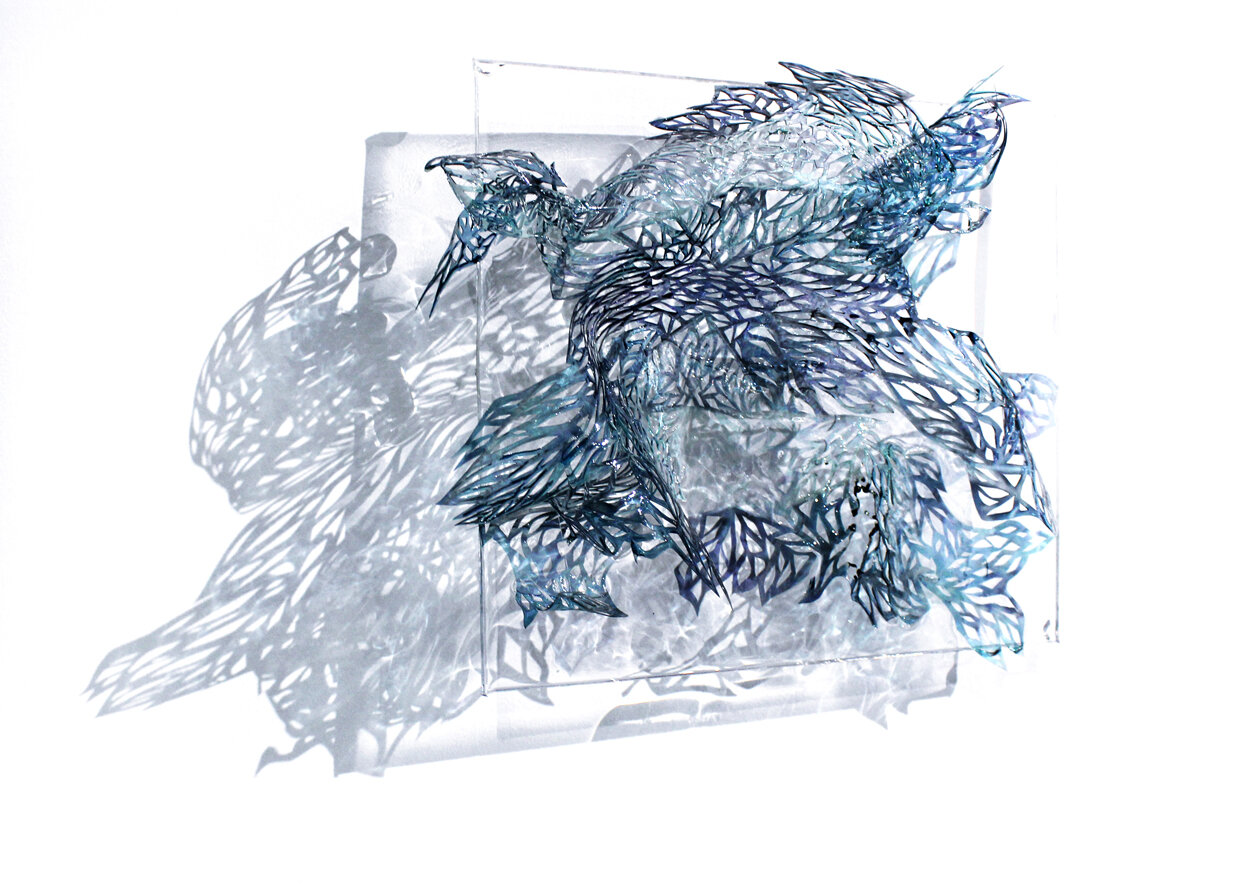
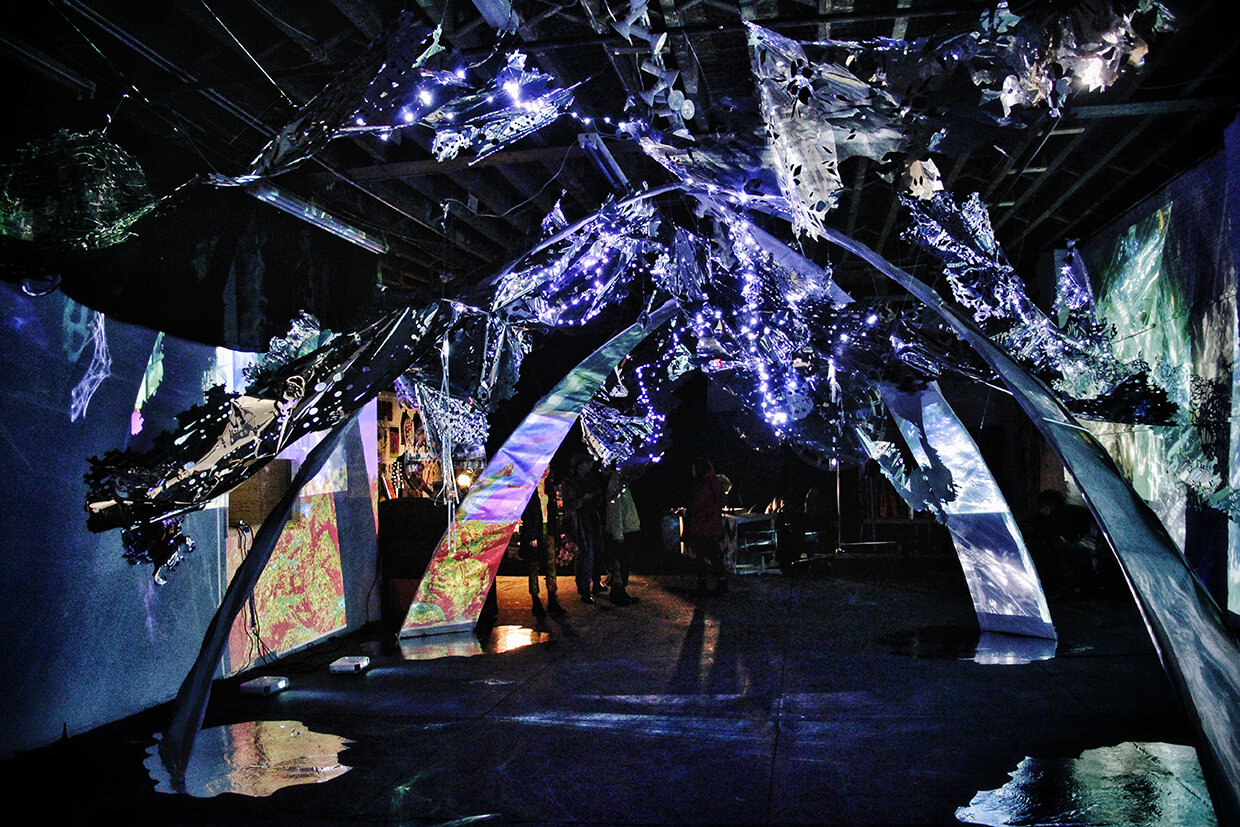

Julia Sinelnikova
juliasinelnikova.com
Julia Sinelnikova draws on a network of folk narratives to generate large, interactive, glistening installations filled with icy light.
Artist Statement
Light is the fluid medium serving as the foundation of my artistic practice, determining how audiences interact with my immersive environments. Through my sculptures, performances, videos and installations, I use ever-evolving modular forms to transform space and examine perception. My intricately hand-cut light sculptures, the Fairy Organs, draw on the myths of the fairies and today's malleability of human appearance in both physical form and online. These works make up the center of my sculptural practice, and I see them as living beings that I am giving birth to as an archetypical woman sorceress. Eastern European folk tales from my upbringing in Russia, dominated by witches, filter heavily into my understanding of mysticism and storytelling. I see my sculptural objects as artifacts from a synthetic whole, an expansive performance ranging from research of natural moss patterns to poetry, light art and theatre.
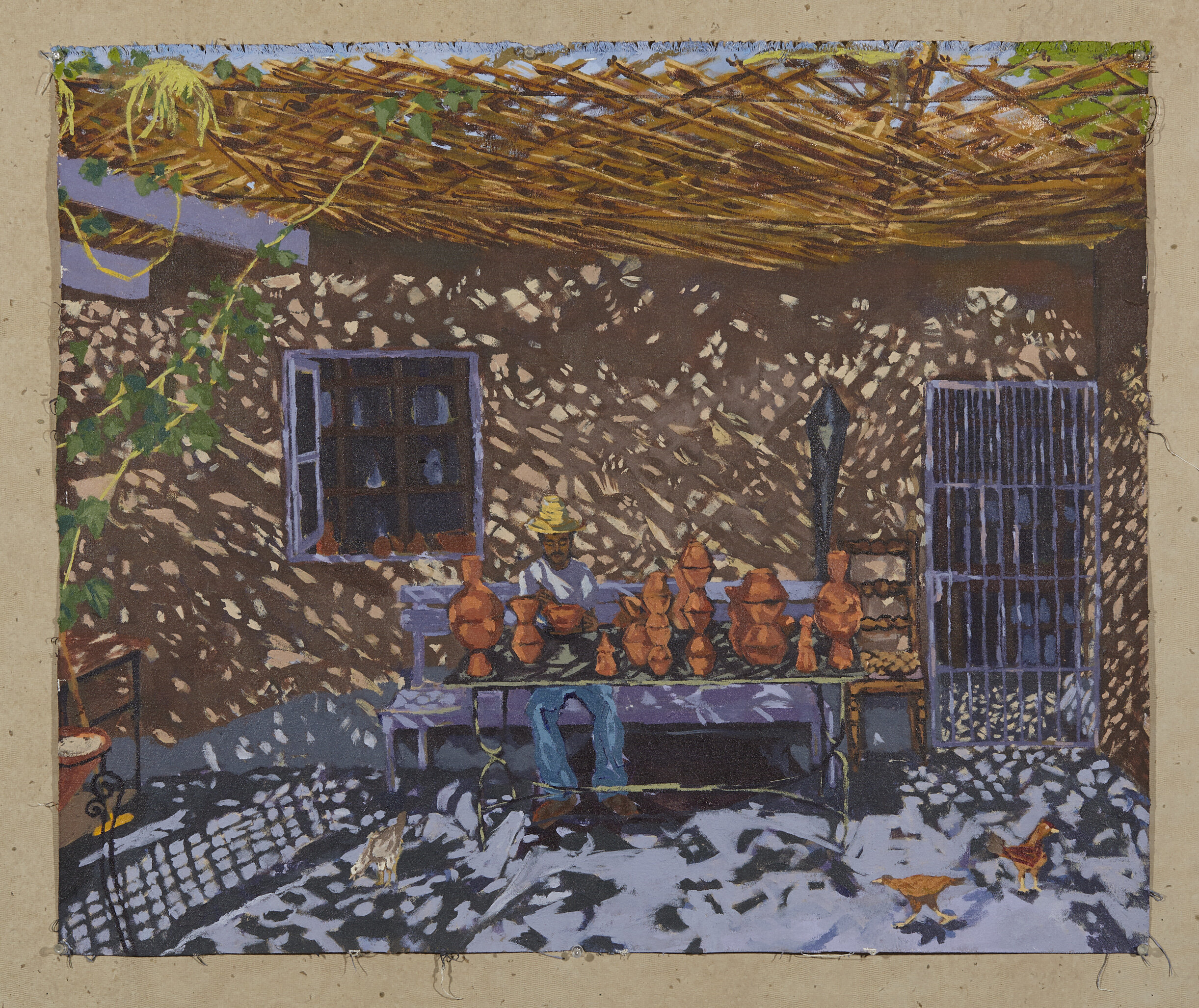
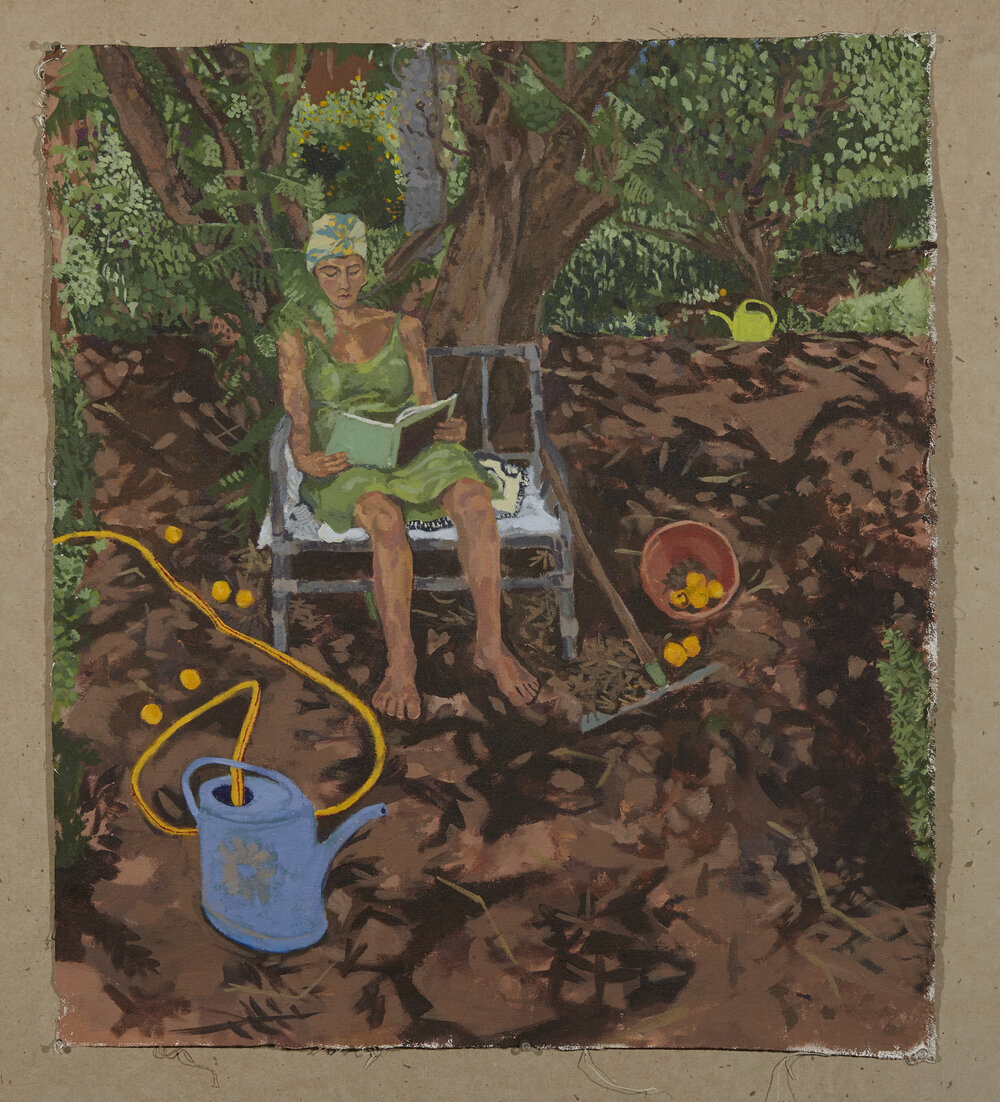
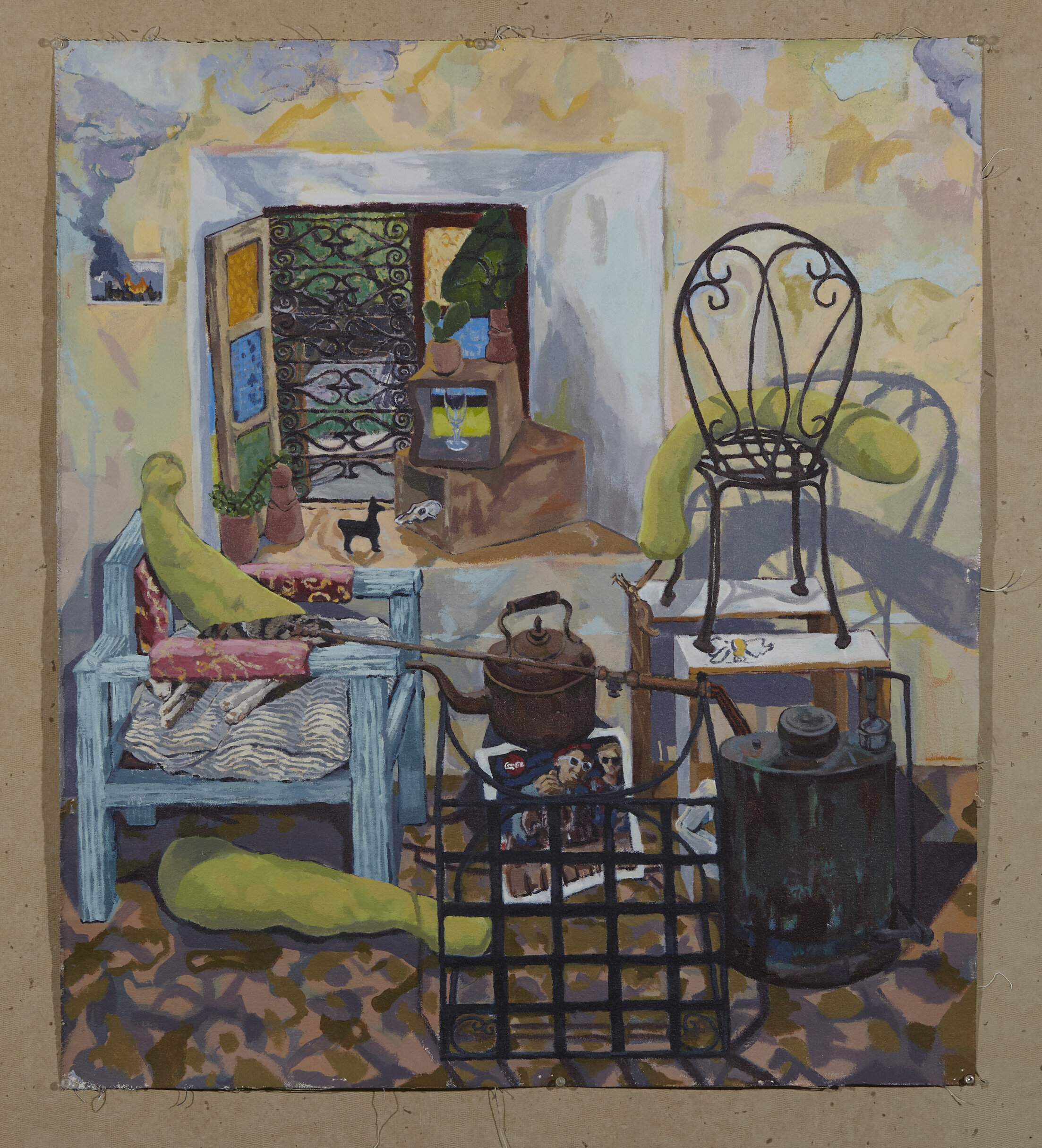
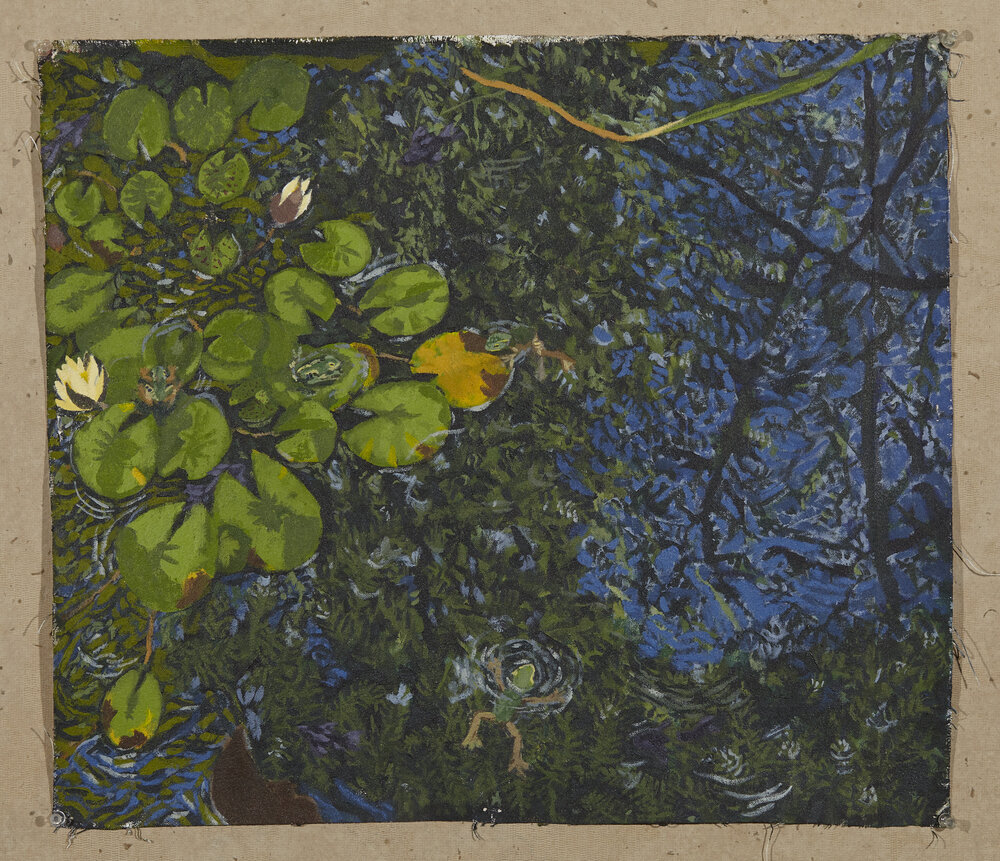
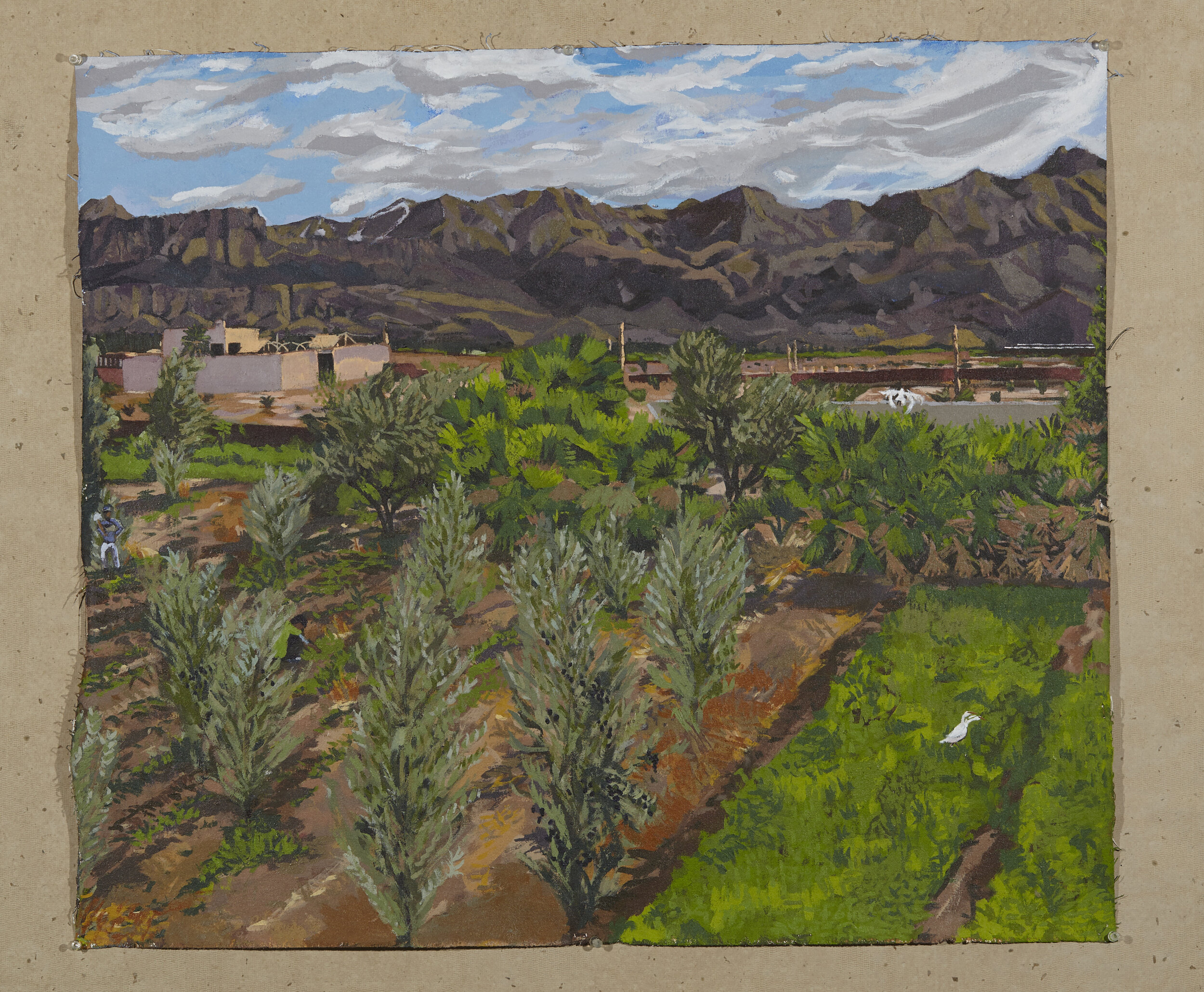
Cody Umans
codyumans.com
Cody Umans deconstructs. From sculptures hidden and embedded in painting stretcher bars, to the line between puppetry, theatre, and academic painting, Umans seeks to engage his audience in an open conversation about the fluid line between fine art, life, and entertainment, with a particular focus on humanities integration into and manipulation of the environment.
Artist Statement:
The goal of my art practice is to communicate stories, social criticism, educational material, and emotional catharsis, relevant to the concerns of the common person today. The artwork often responds to my life in Queens, NY, however, traveling influences the artwork by unearthing comparisons between cultures, politics, and visual stimuli from my home, and the world abroad. I like to explore these themes through a variety of mediums ranging from drawing, printmaking, and painting, to sculpture, and video. Inspired by the powerful aesthetic of murals and signs, I construct installations from my paintings. These installations lend to collaborative projects, involving audience participation.
I strive to invite people, who normally feel excluded from the art community, to participate in the conversation. Manipulation of the environment is an overarching theme of the series of nine paintings made in residency on the sustainable farm, Sanctuary Slimane, just outside of Marrakech, Morocco. The paintings, all made on site, share a view of the landscape that extends to the peripherie. The canvases, painted end to end without borders, have multiple subjects, representing nature, tools, and a variety of people with equal importance. My artist practice during this residency was largely inspired by social realist painters from the W.P.A period. In addition to the paintings, I produced large drawings from observation, and painted a mural on the water pump house, also functioning as the field worker’s lounge.
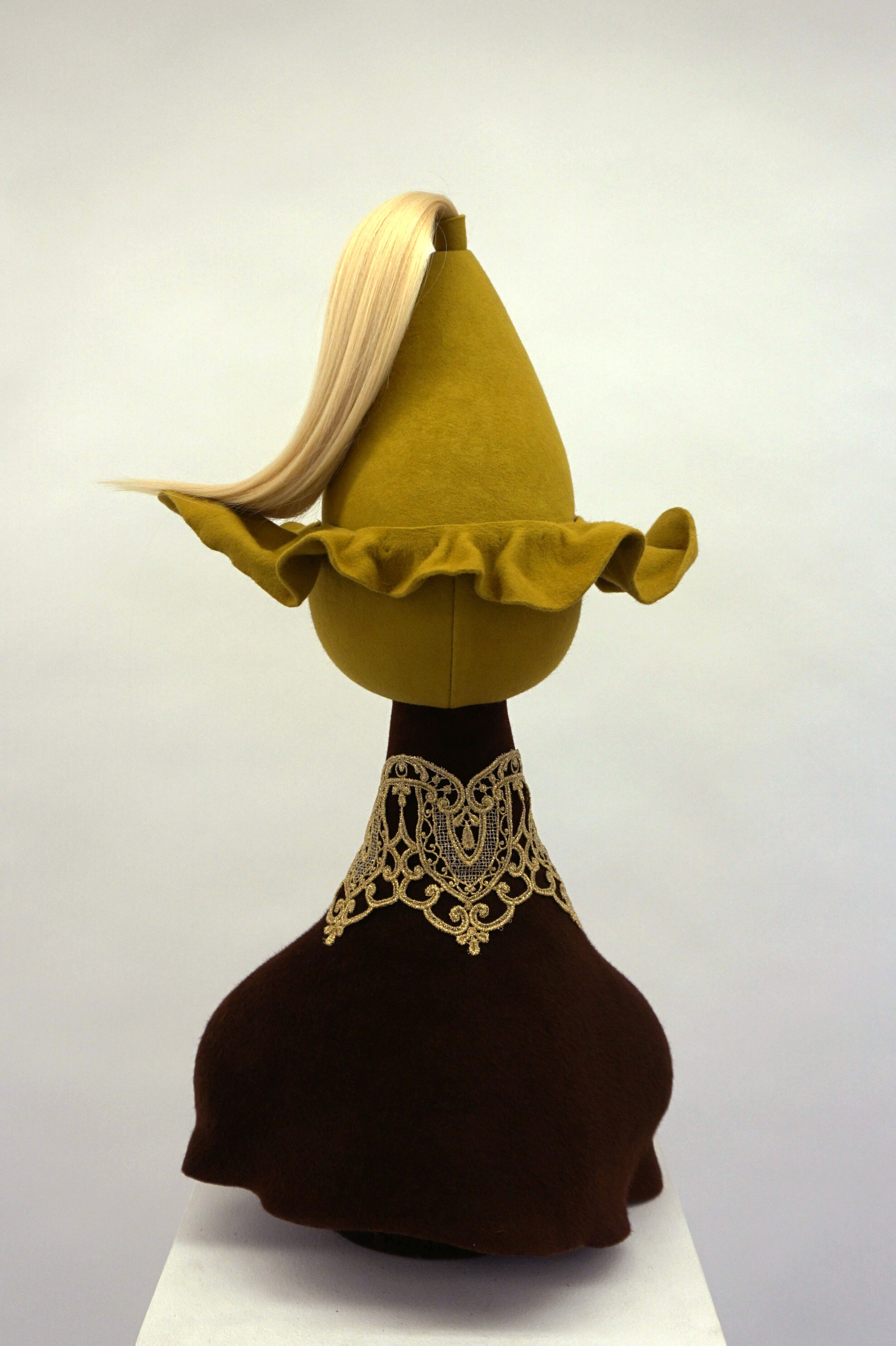
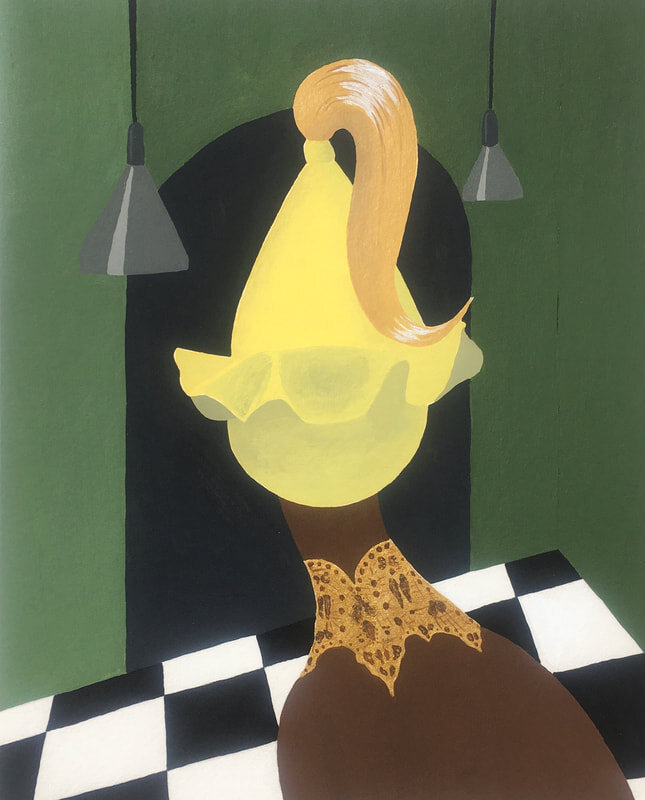
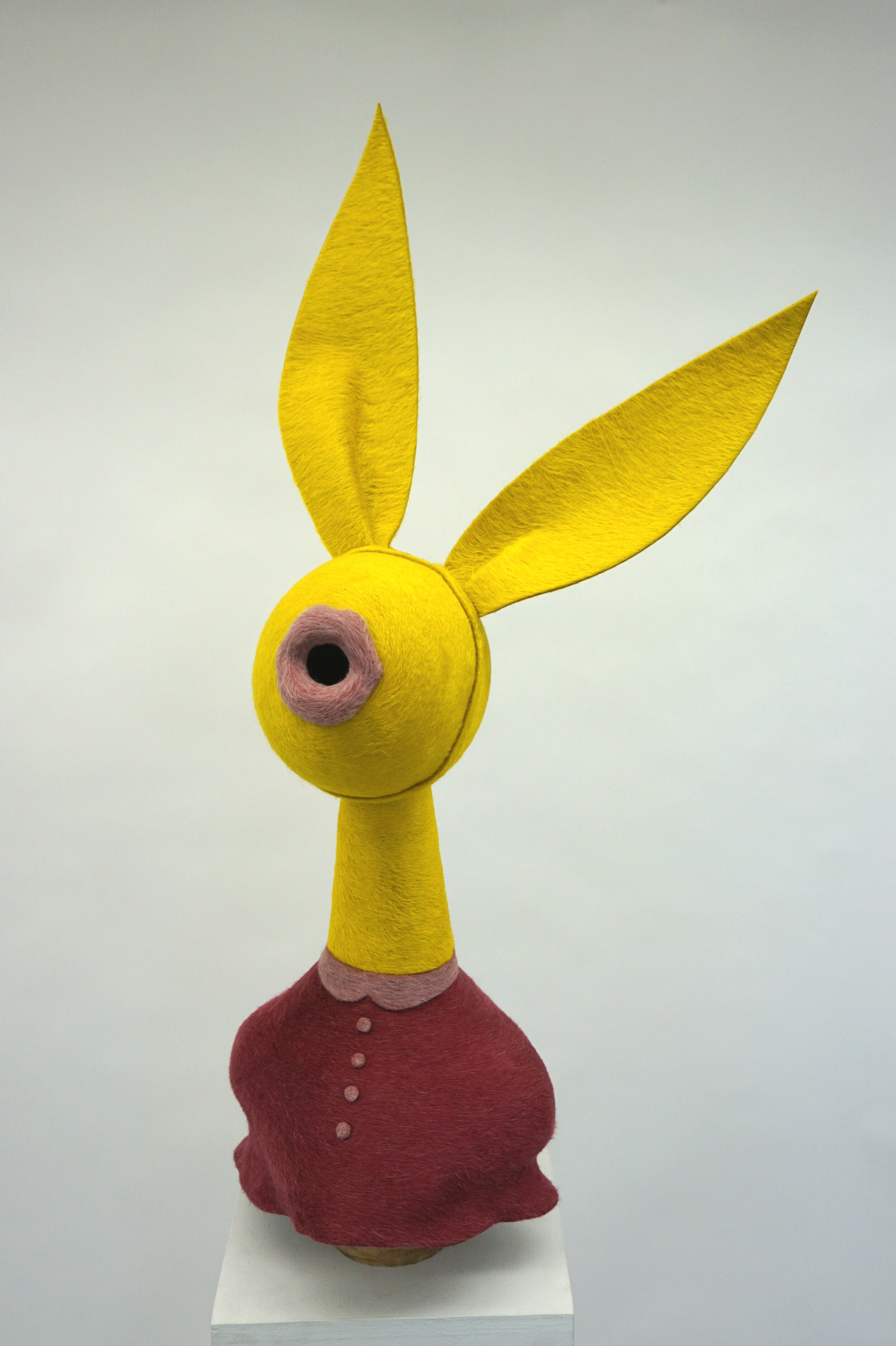
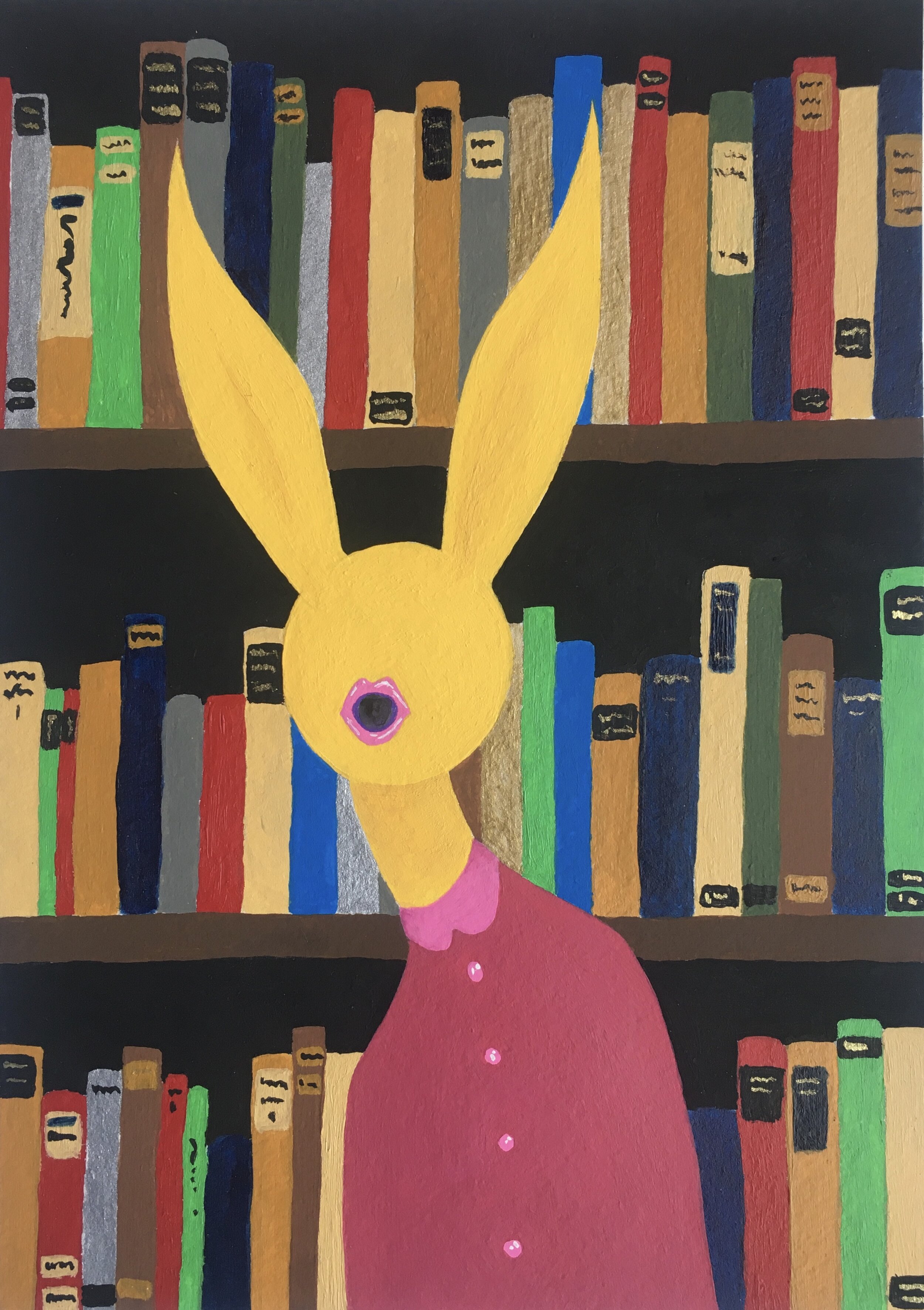
Ryan Wilde
ryanwilde.com
Ryan Wilde charts the dangerous and titillating nature of sexual desire in the restrained body. Playing in psychological topologies, Wilde generates fetish-dolls-turned-models, through theatrical stages highlighting the sexual extremes of perversion, love, and betrayal.
Artist Statement:
Ryan Wilde is a sculptor and a painter who explores the strategems used by women to navigate patriarchal systems. Building on her previous career as a hat designer, Wilde repurposes her technical skills to invite public dialogues on the theatricality of gender. Constructed with materials and color associated with female ideals, her work manifests the uncanny extreme that is identified with the sexuality, fetishization, or objectification of women in our culture. By highlighting the semiotic mechanism of the cultural expression, Wilde’s work creates a platform to reconsider the purpose of the conventional system of signification.
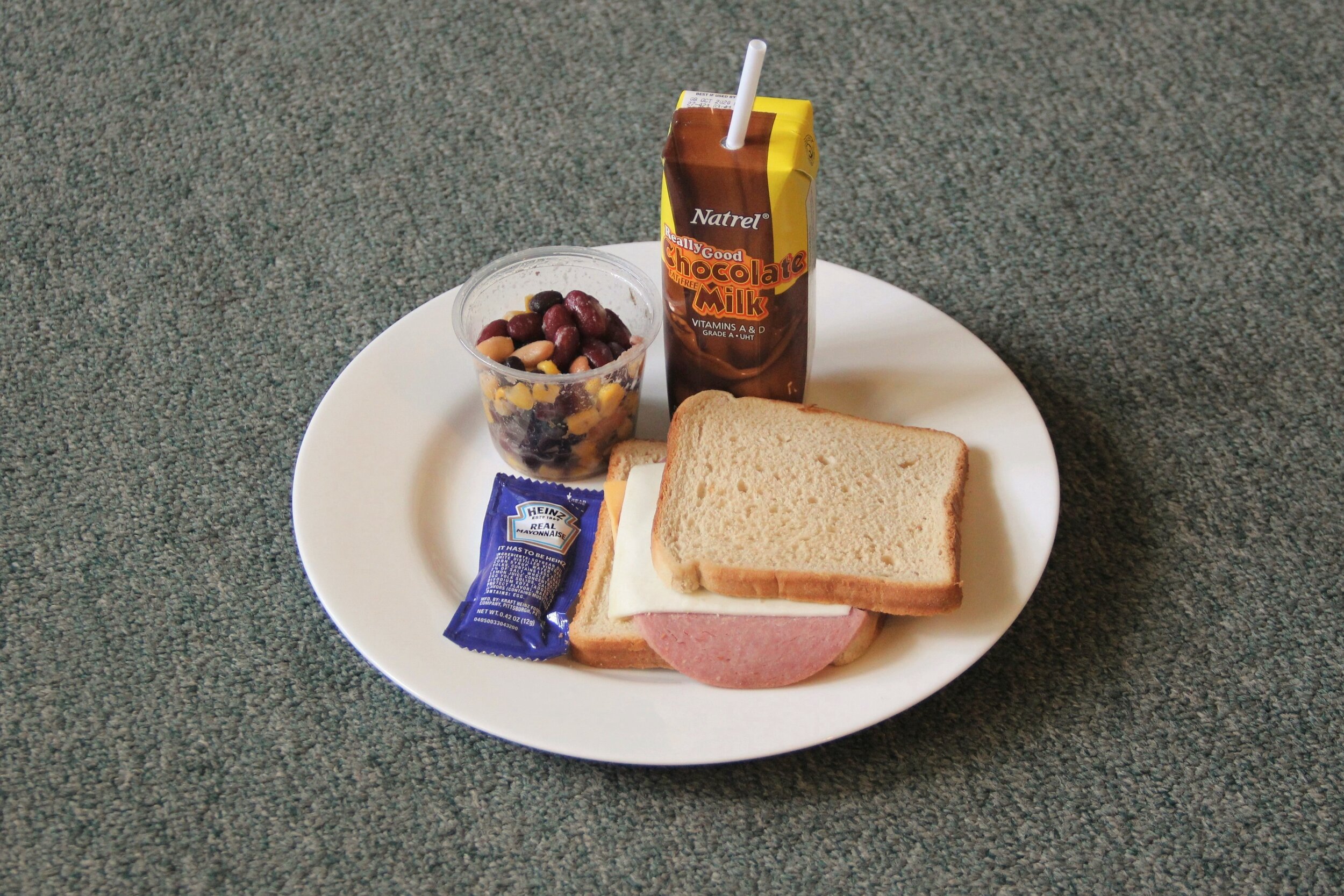
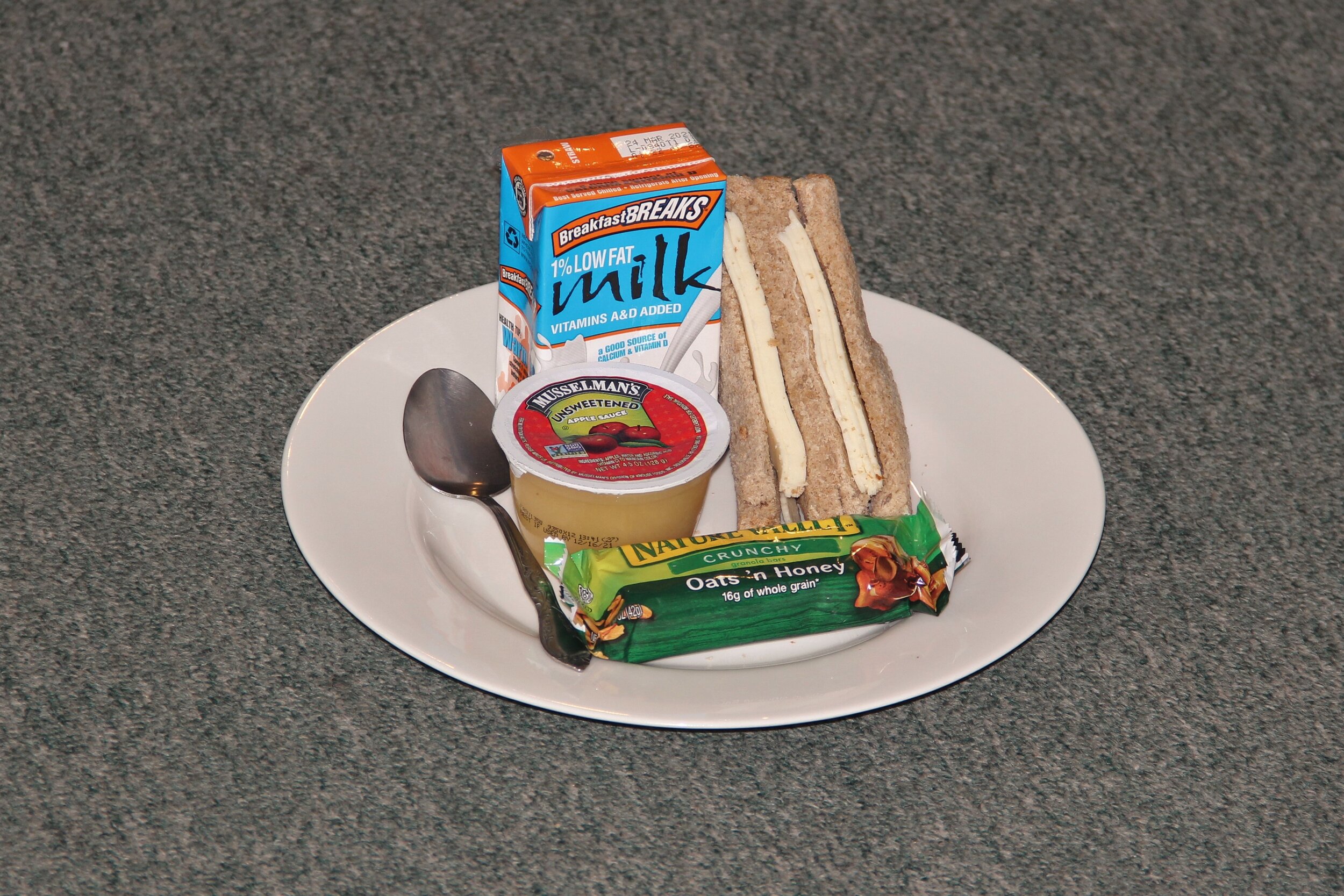
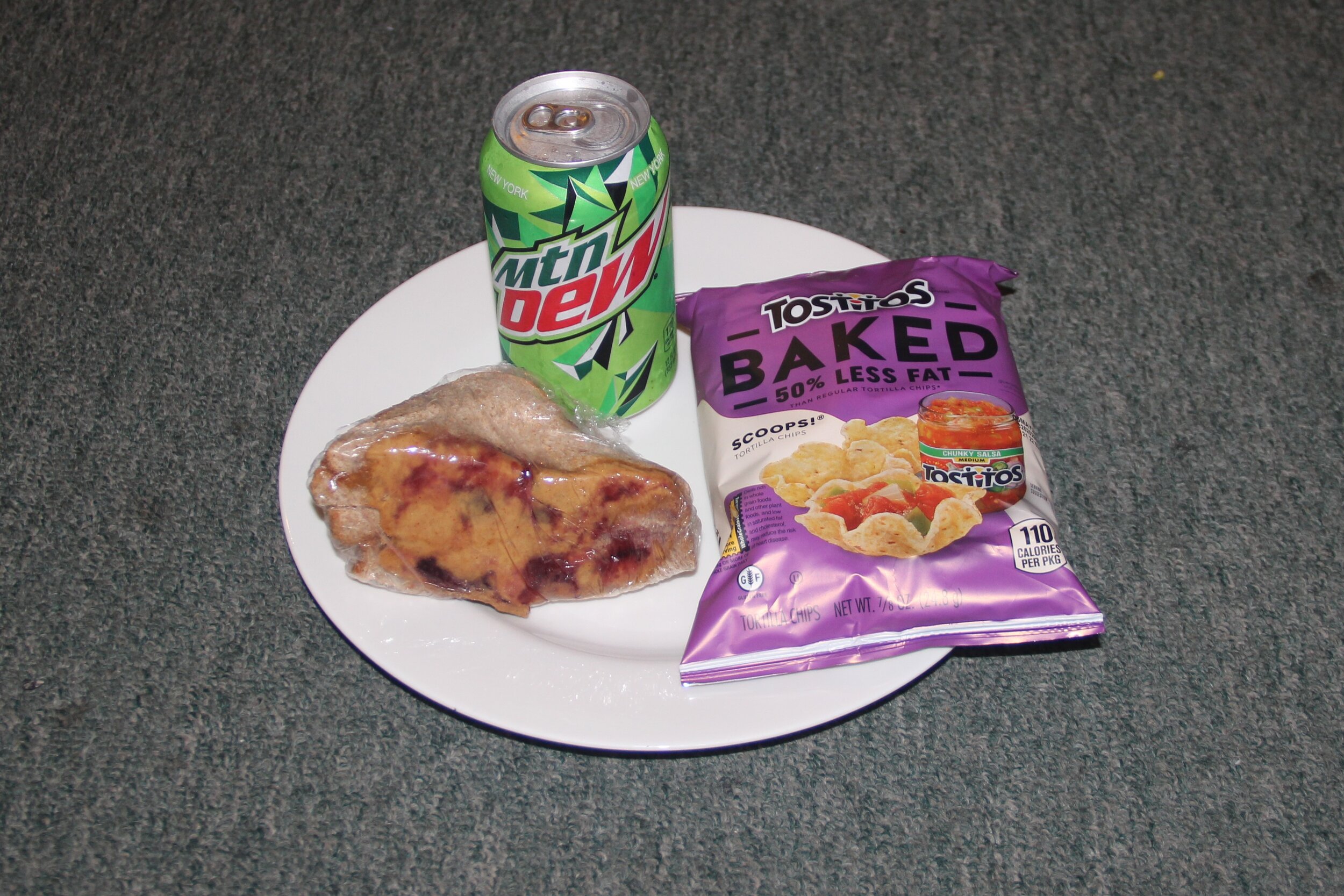
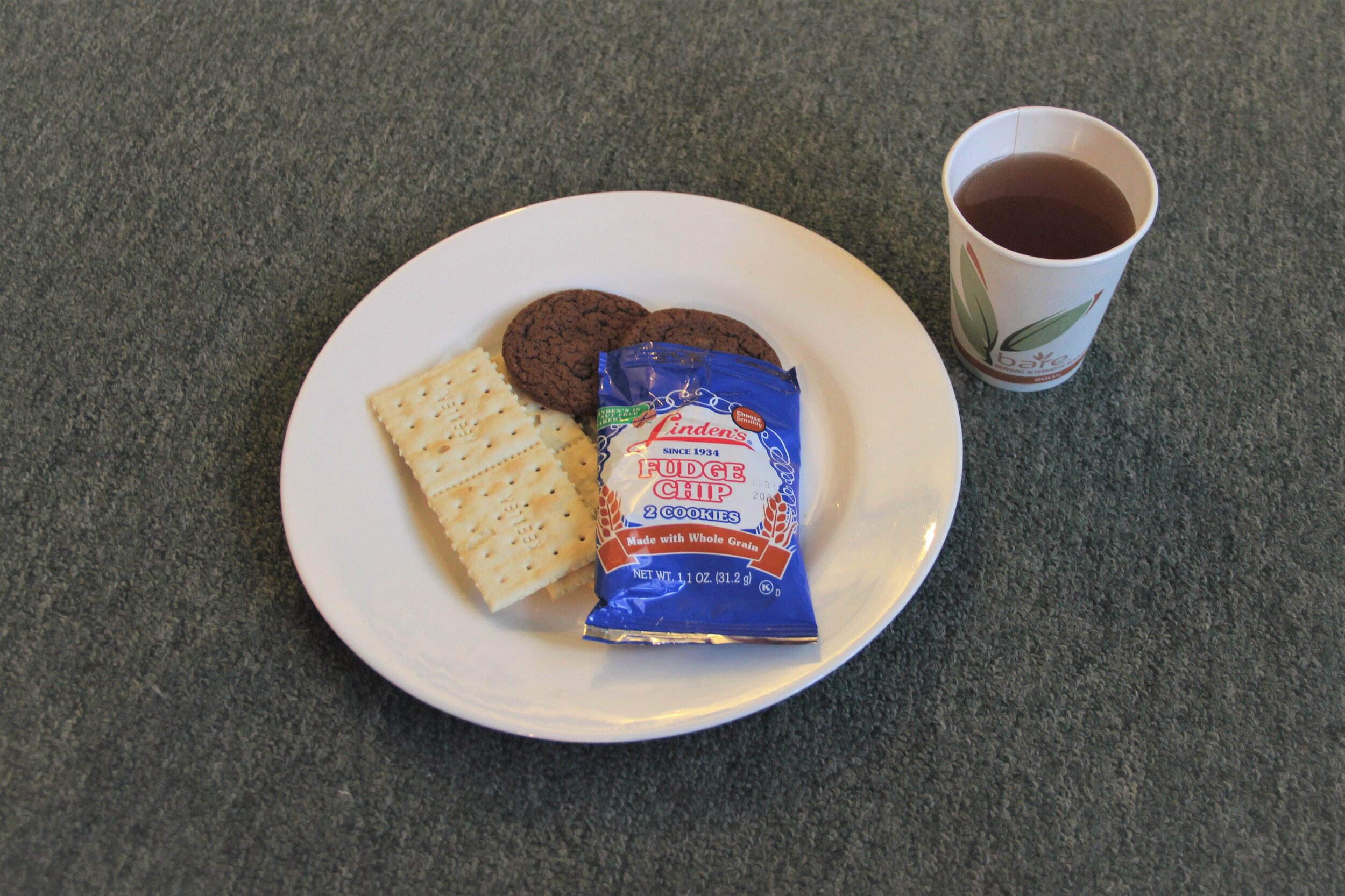
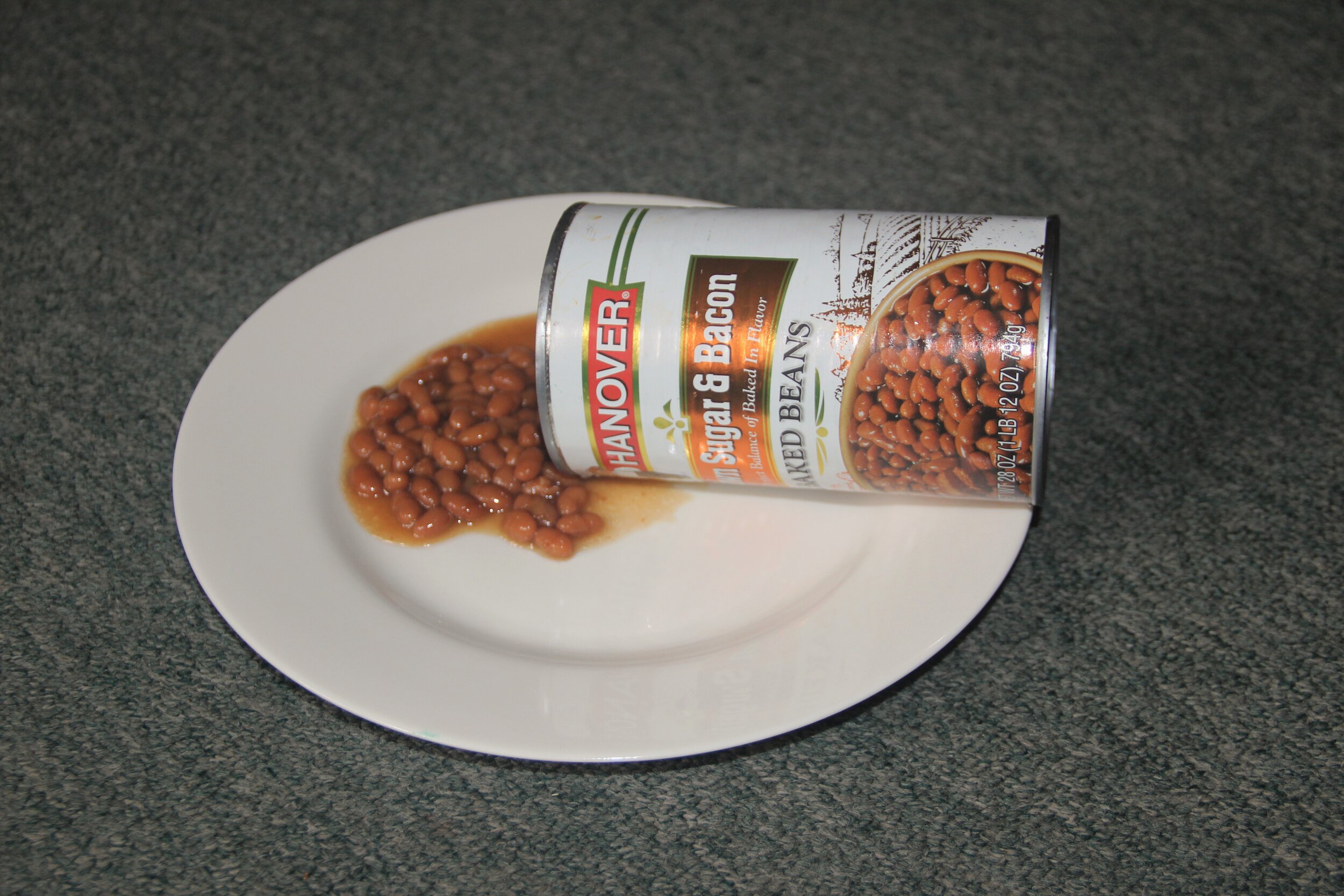
Alex Wong
Alex Wong has paired down his community-based and sculptural studio practice during the recent SIP orders, documenting the passage of time through a photographic map cataloguing sparse quarantine foods.
